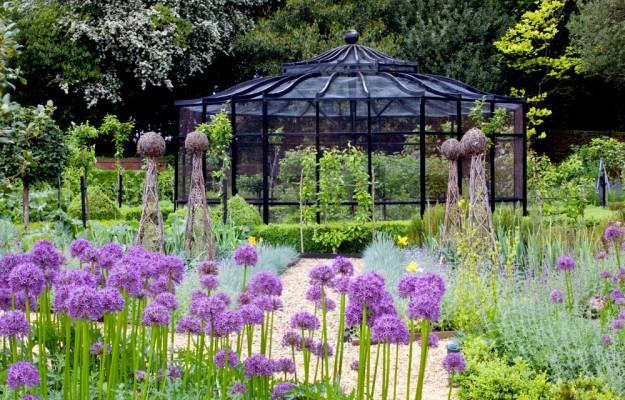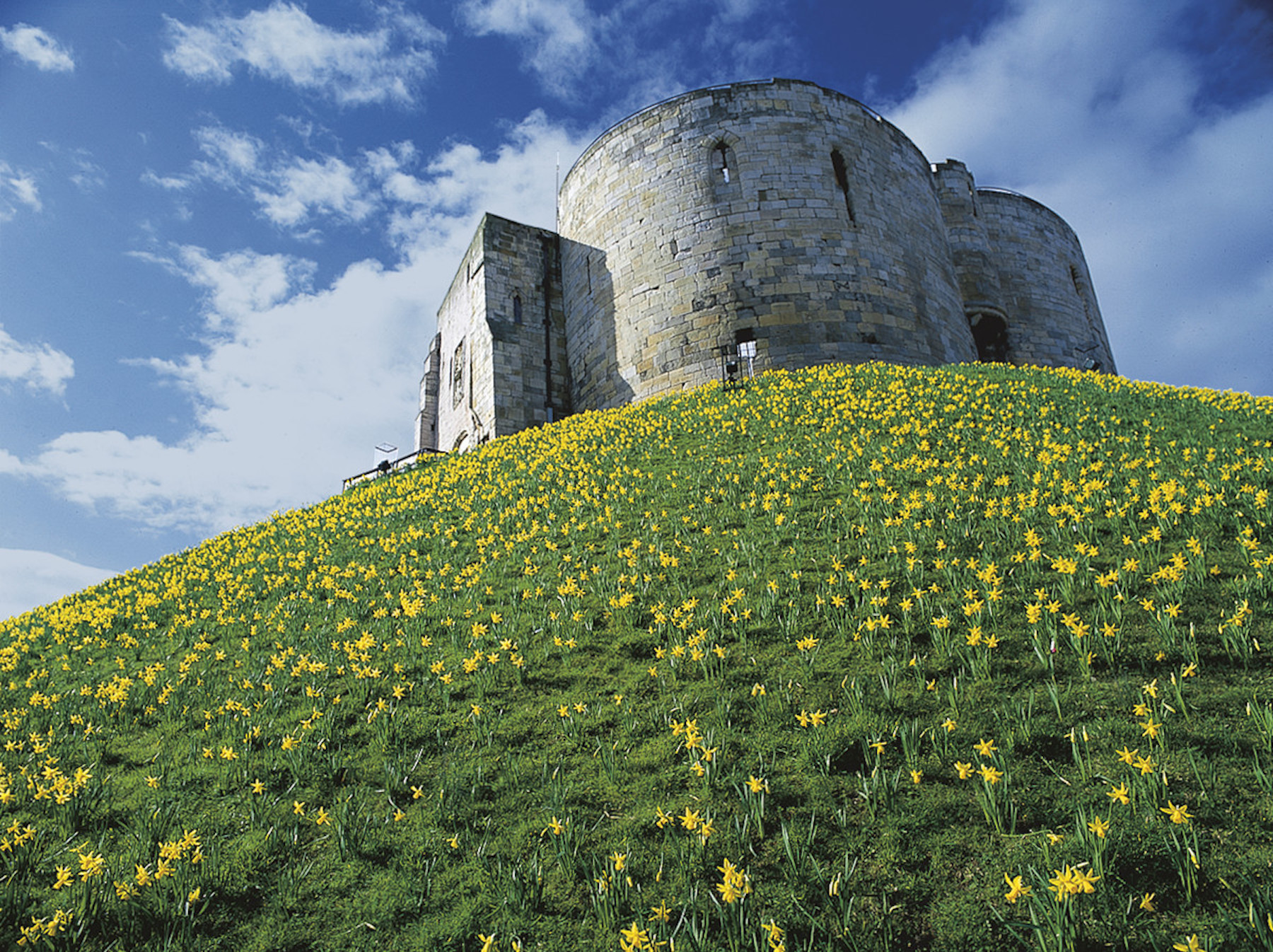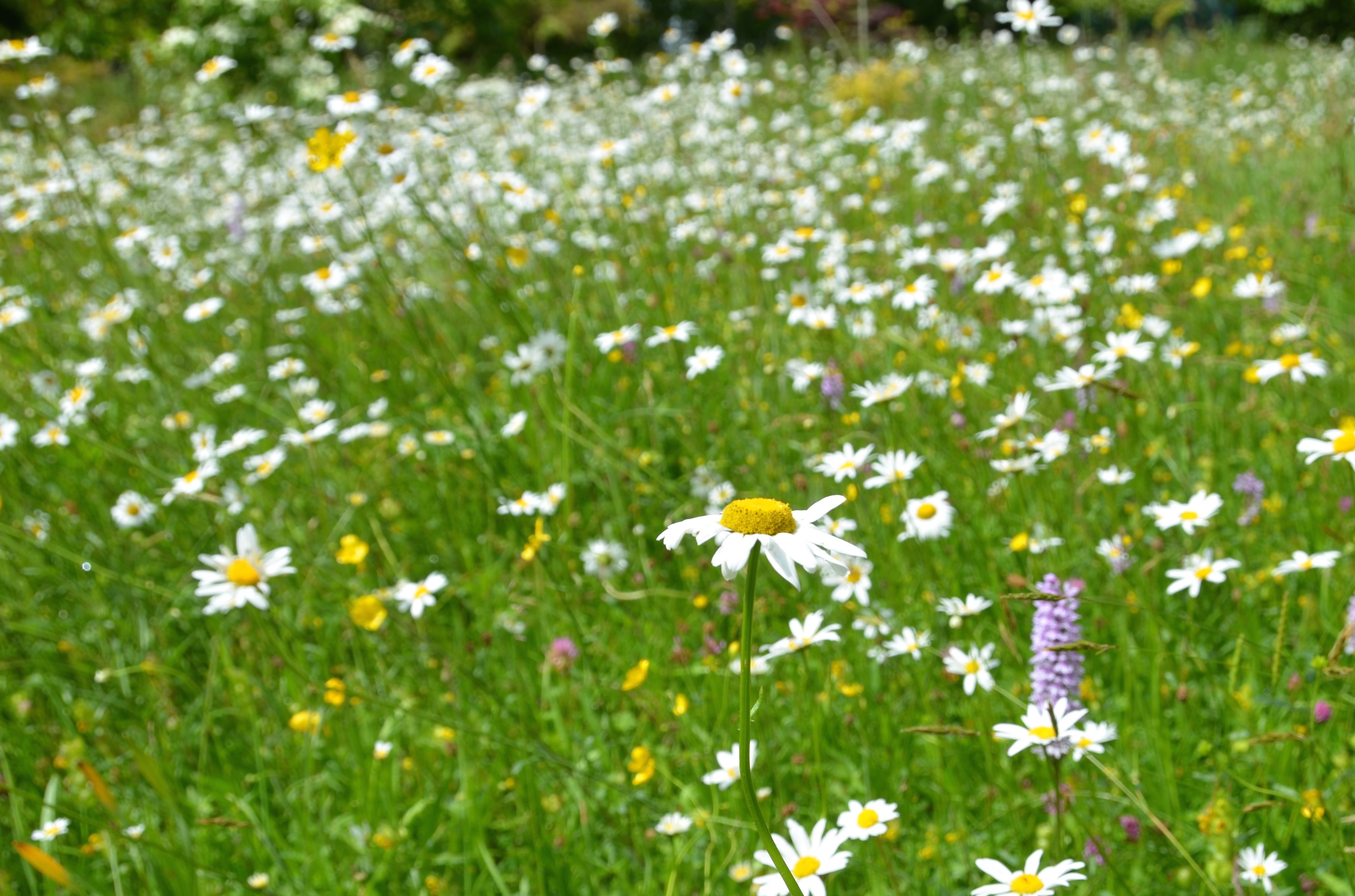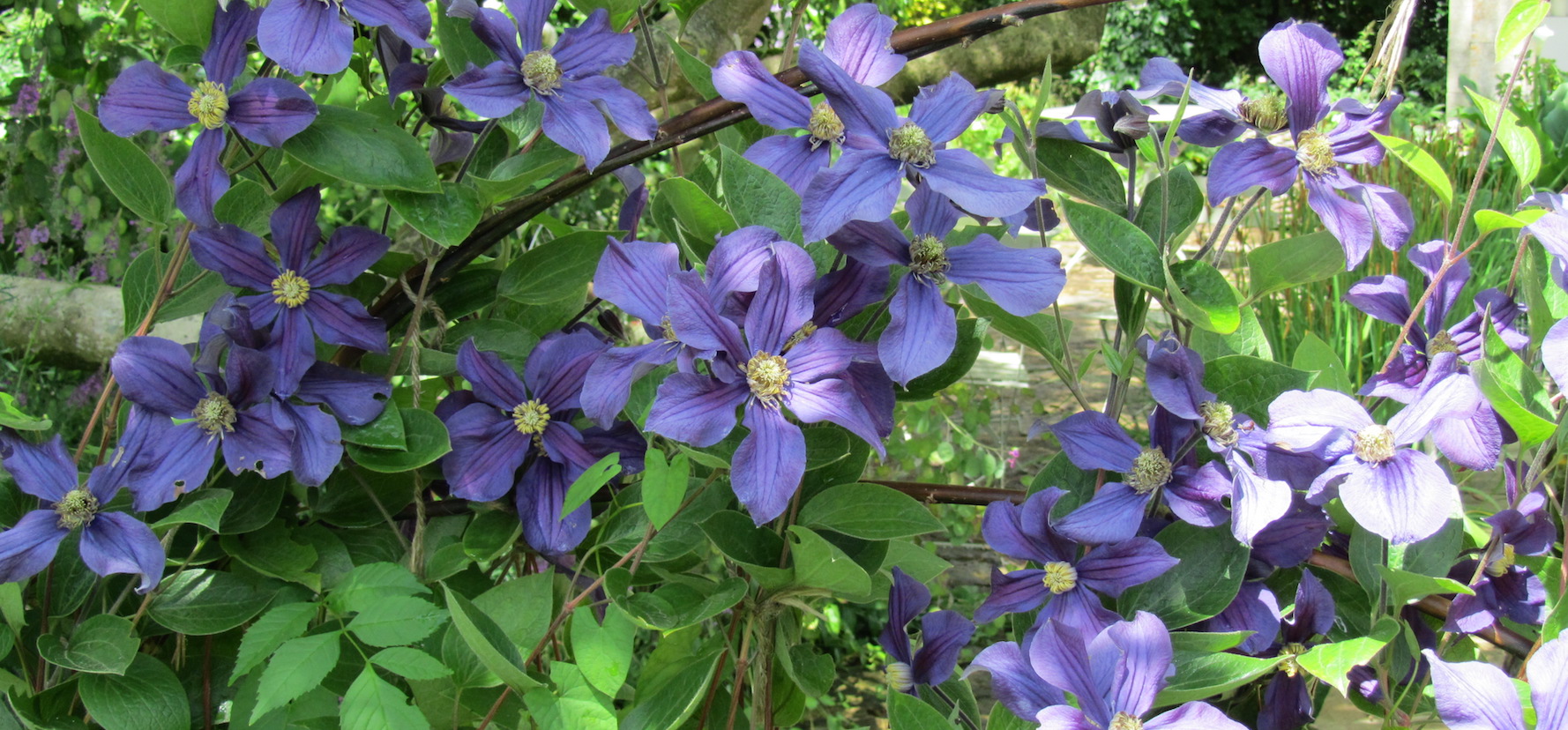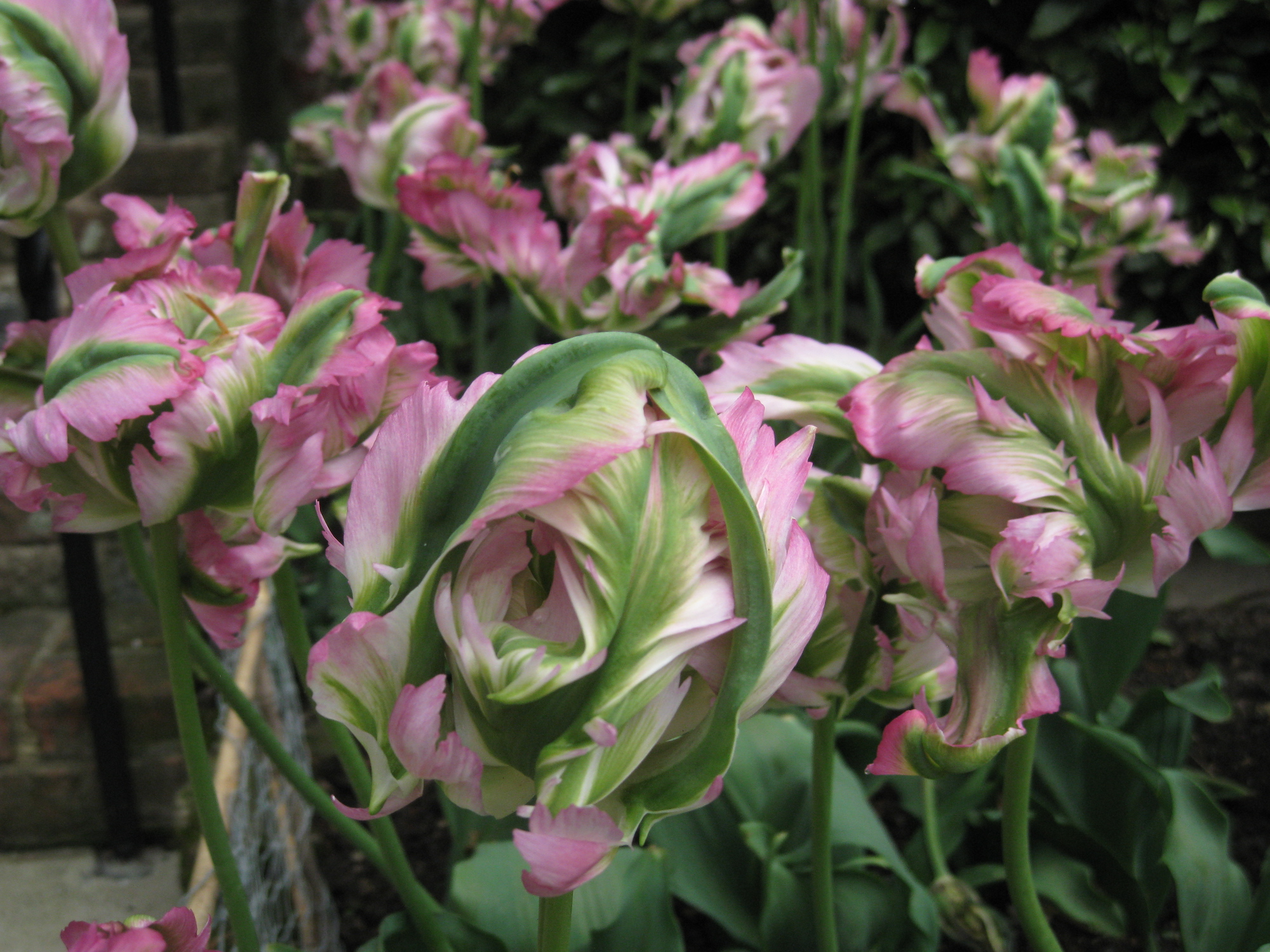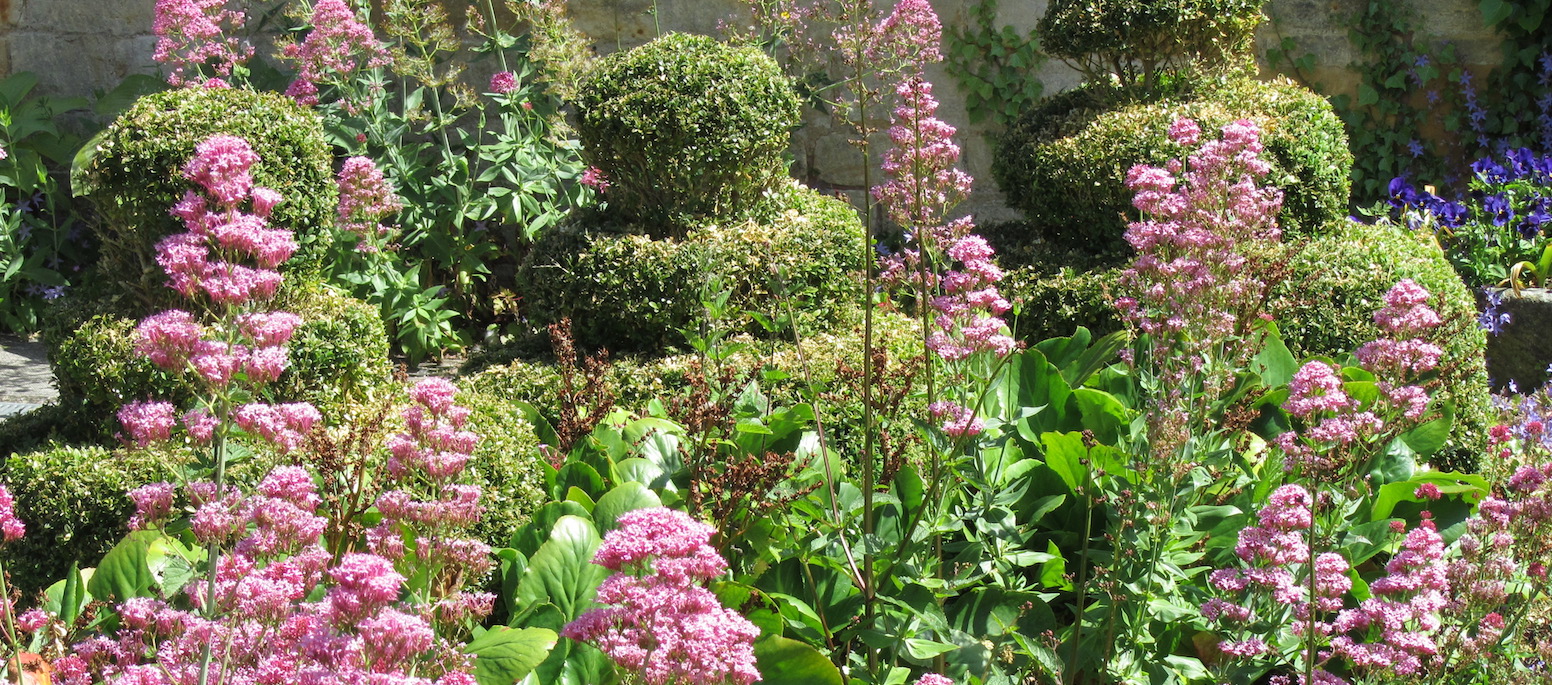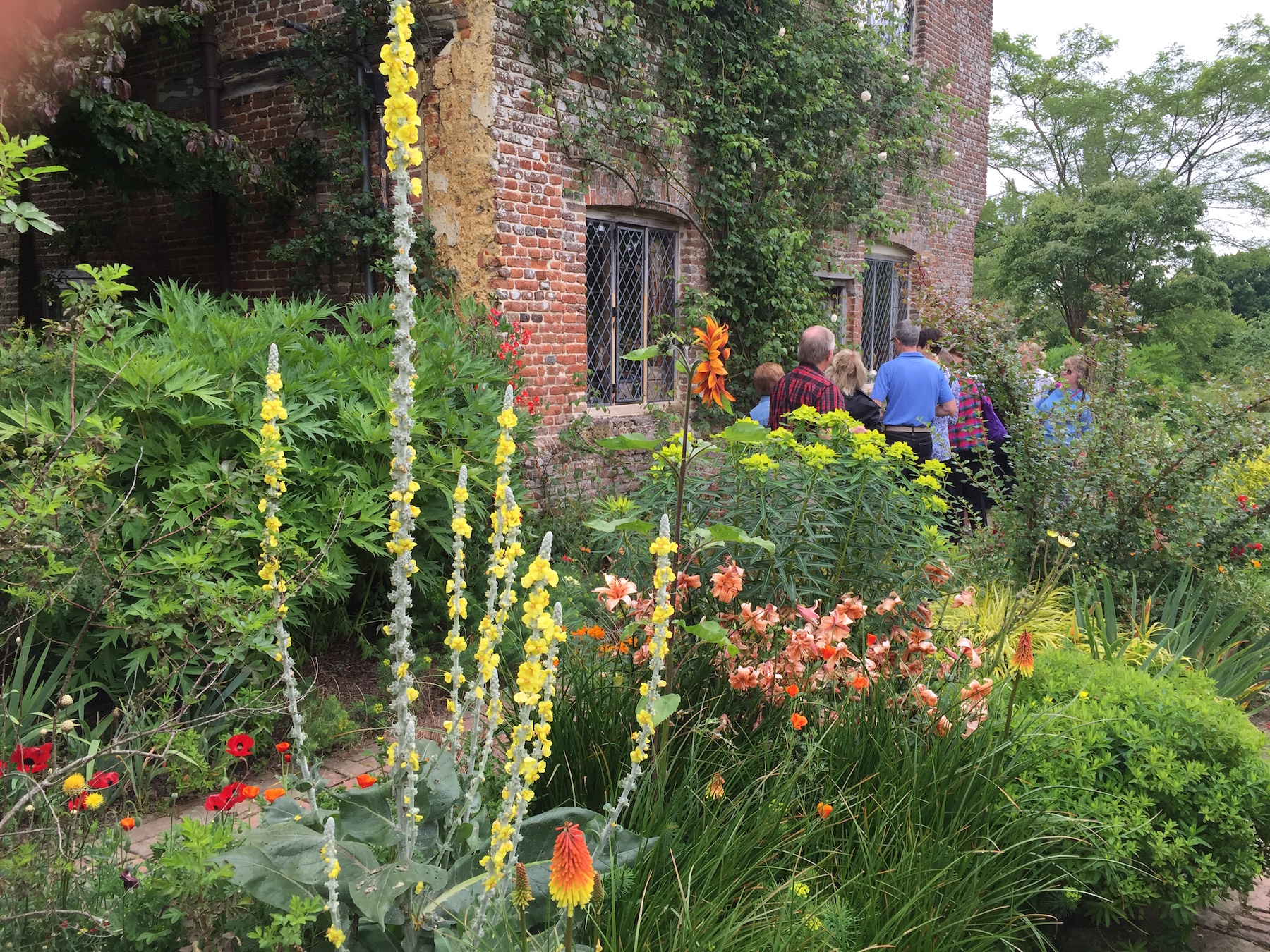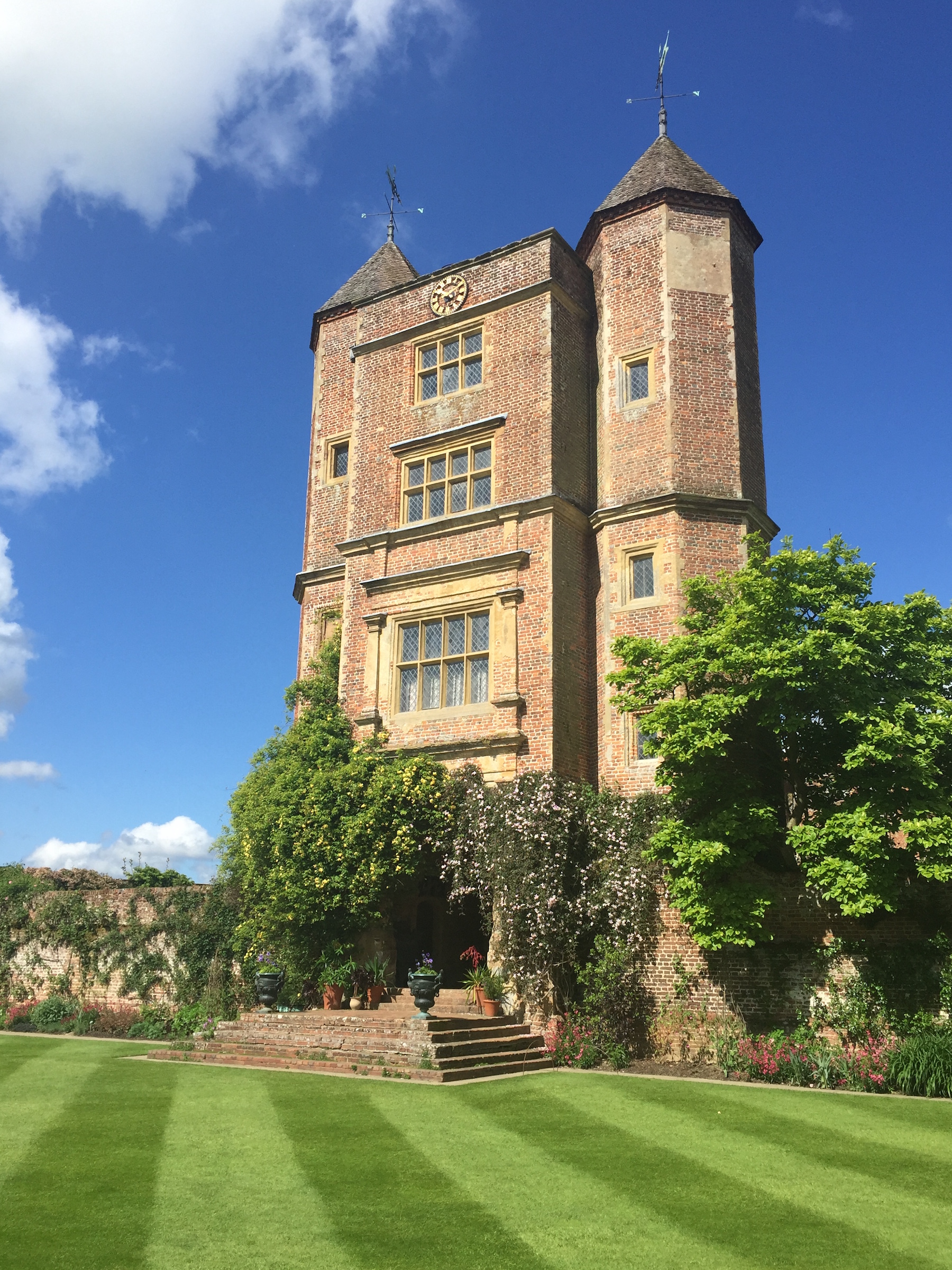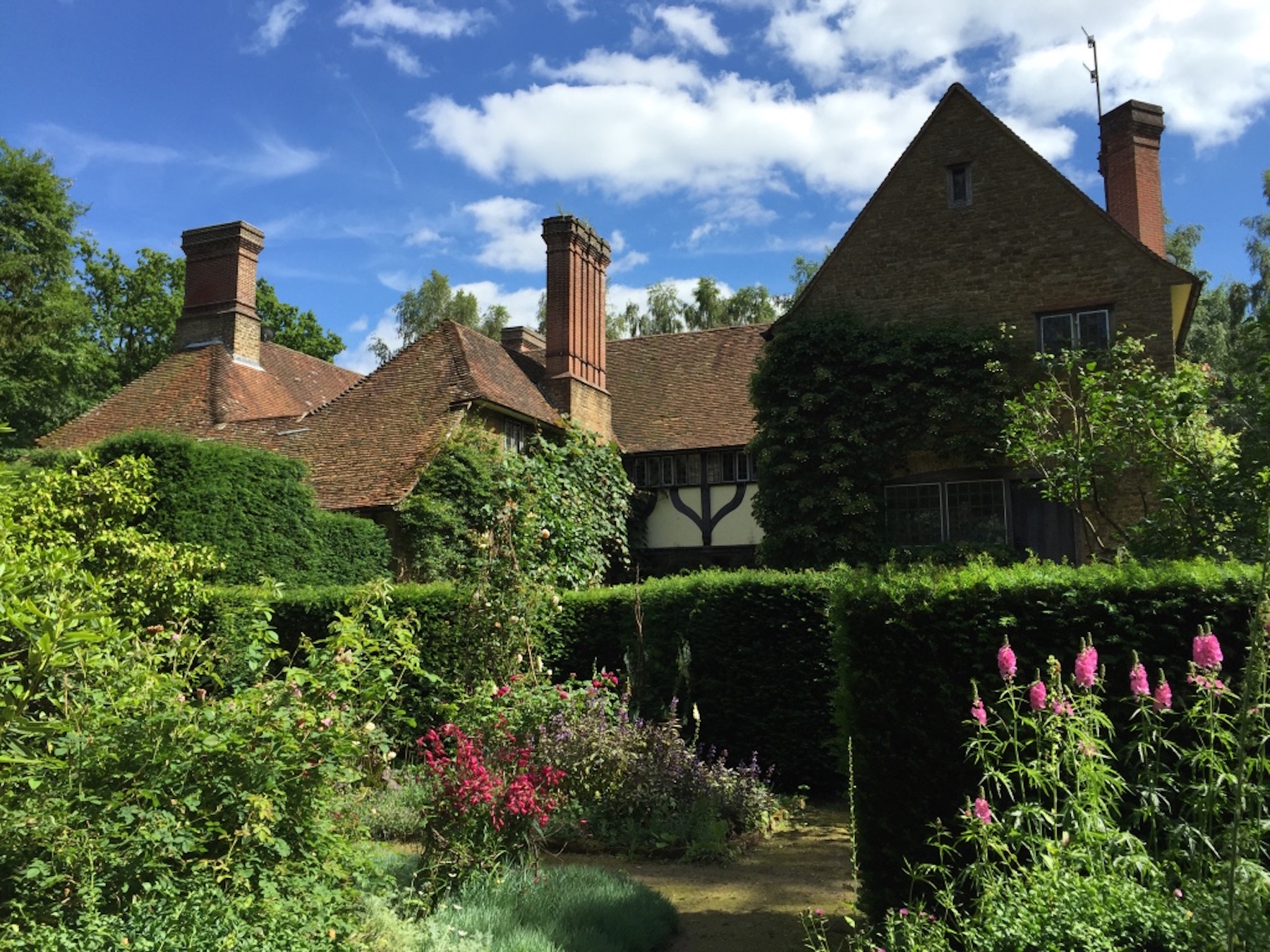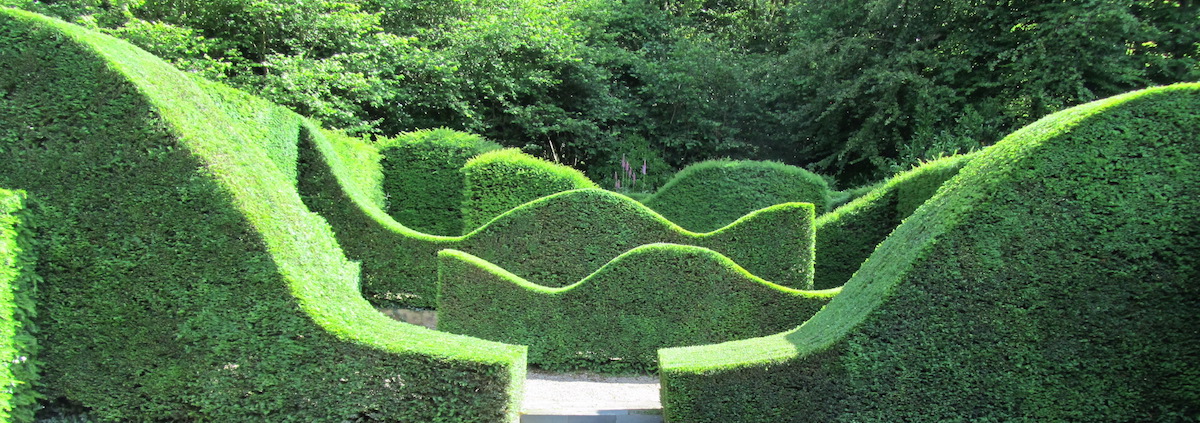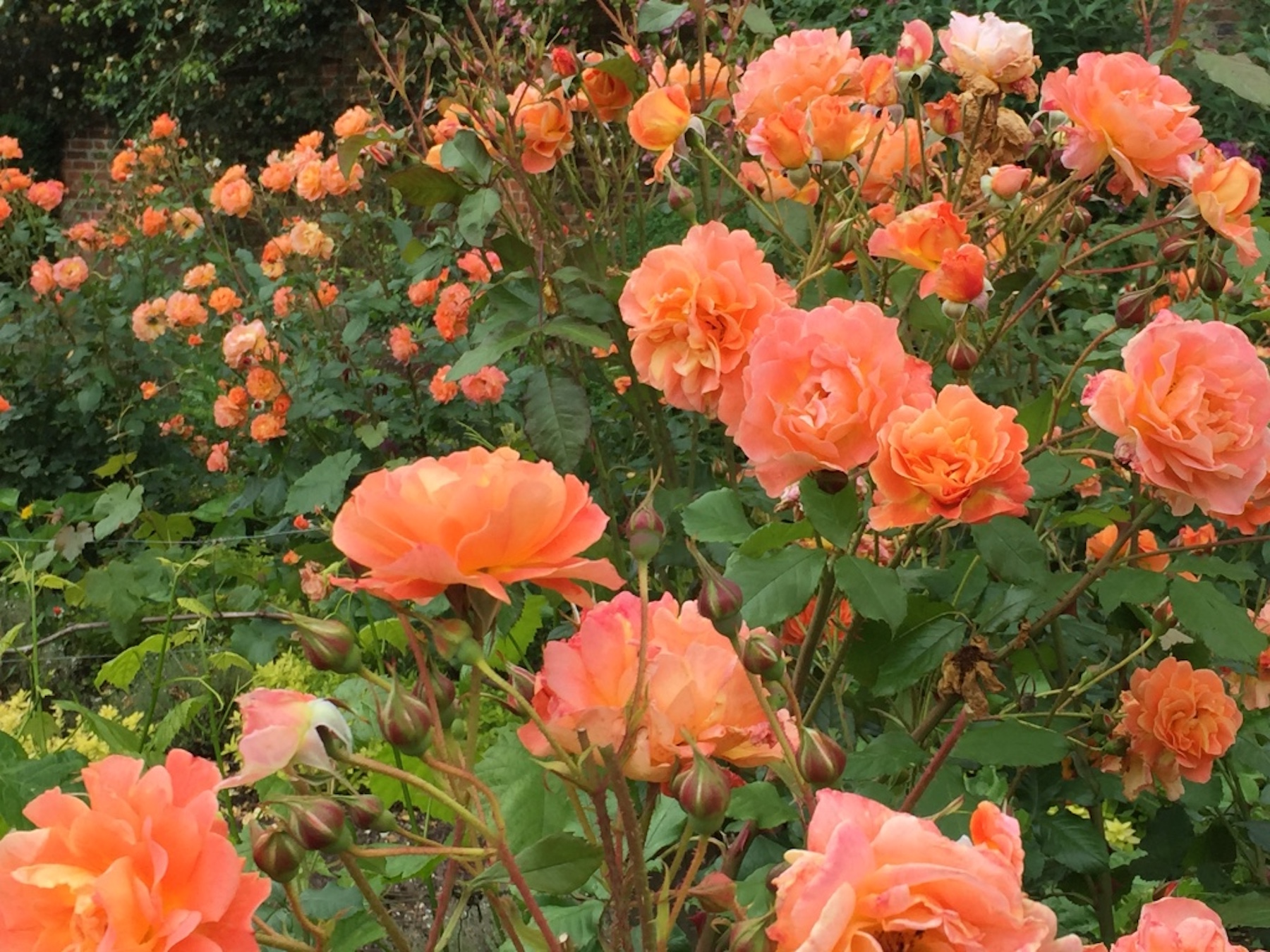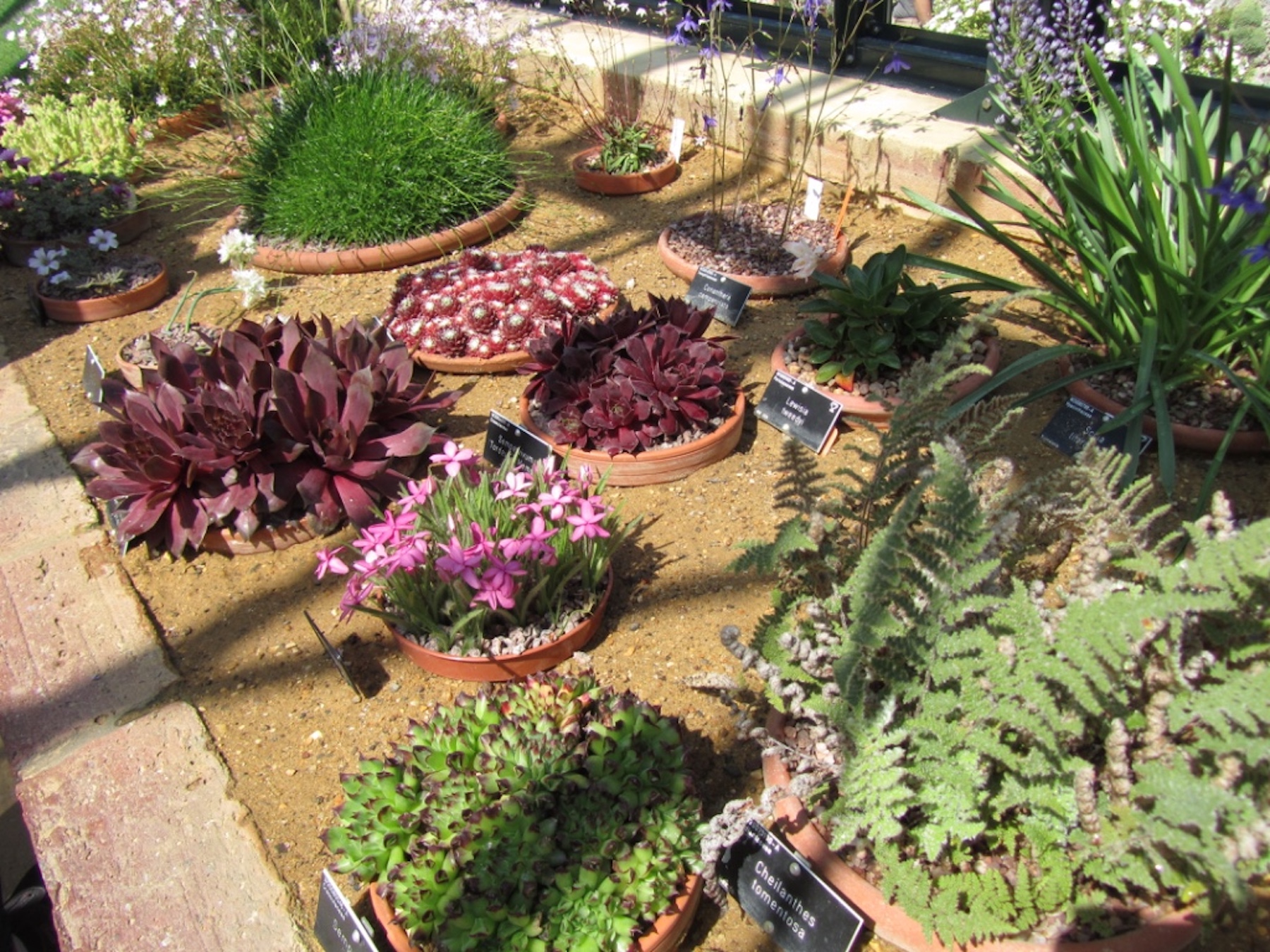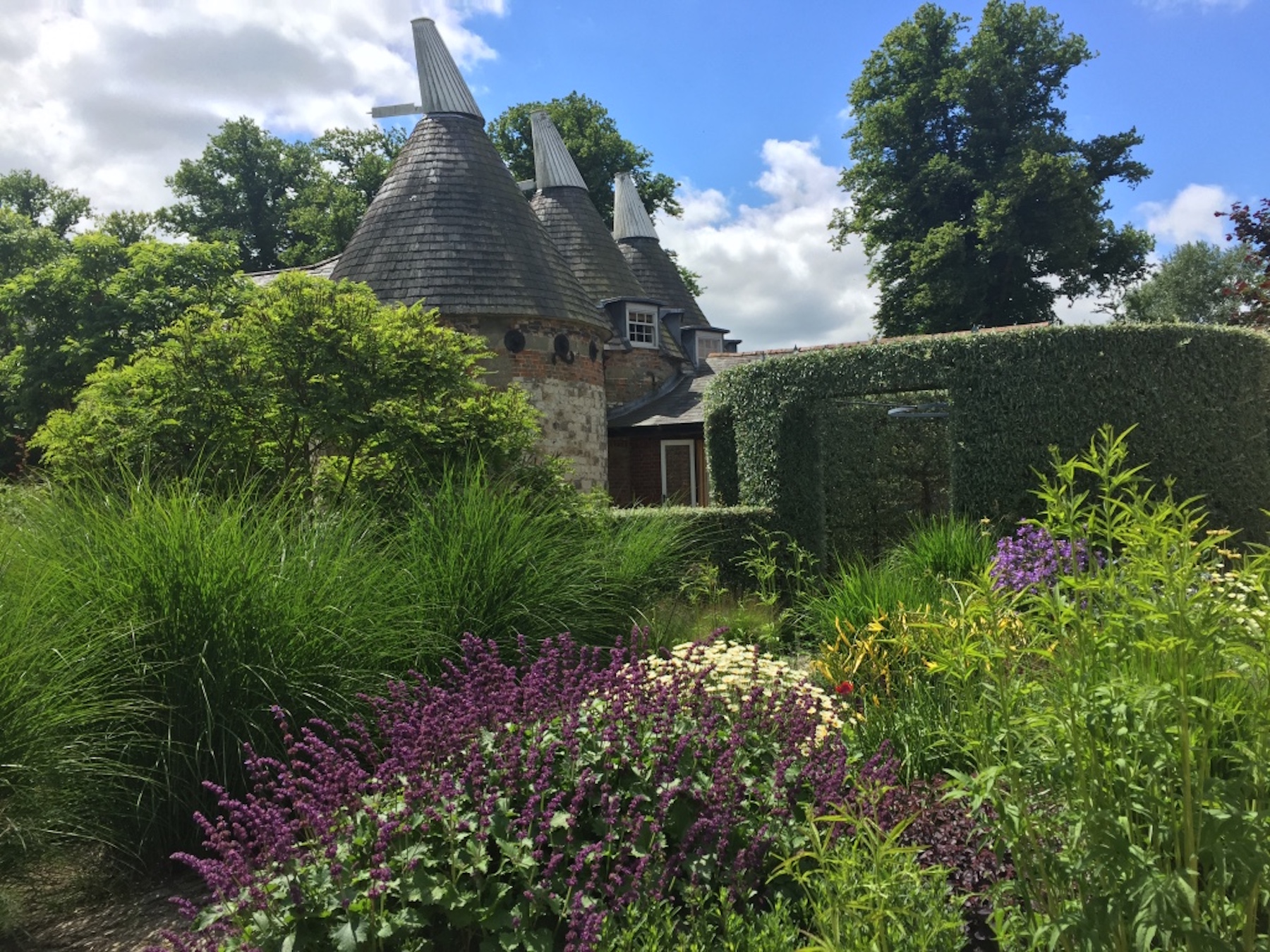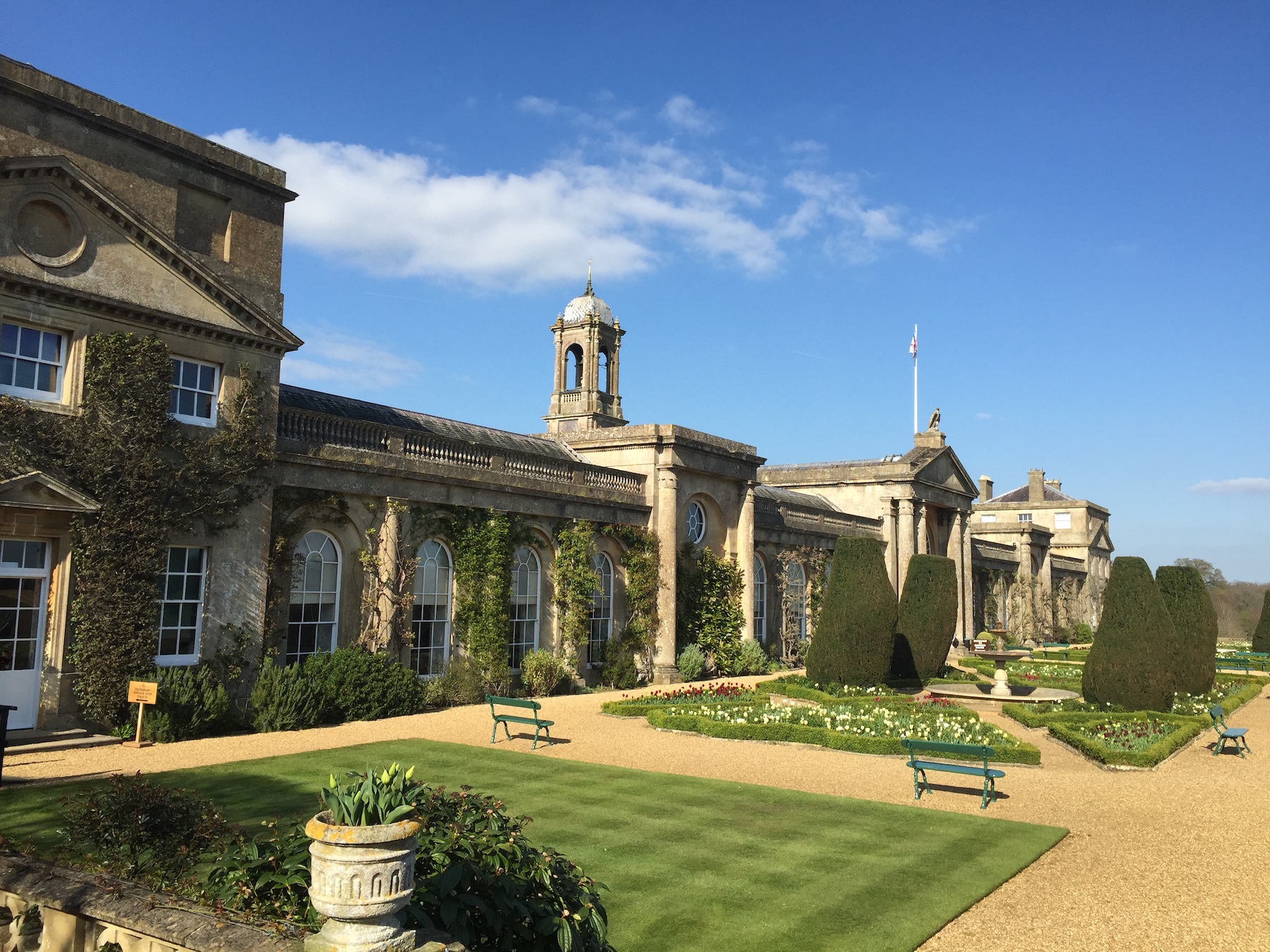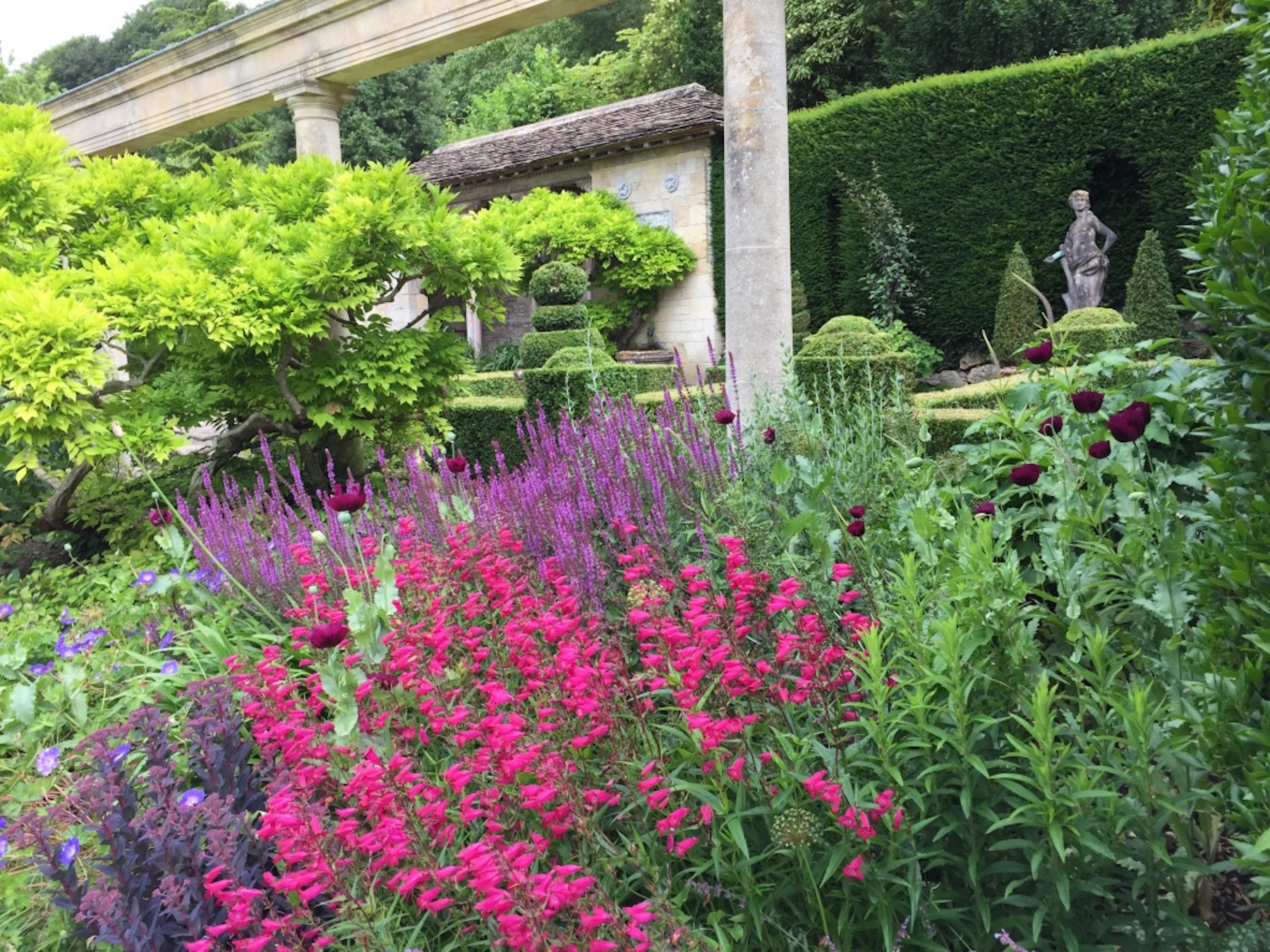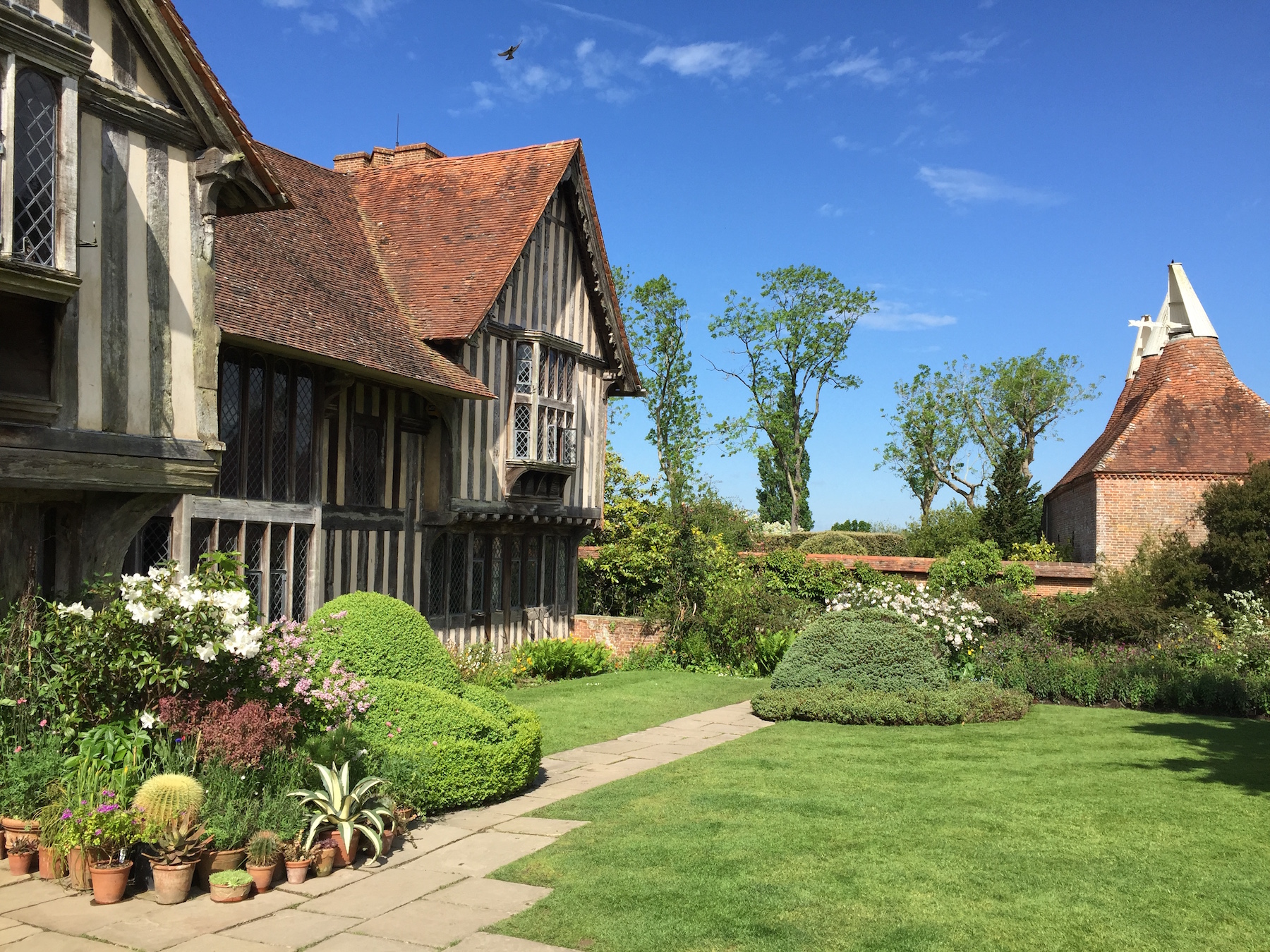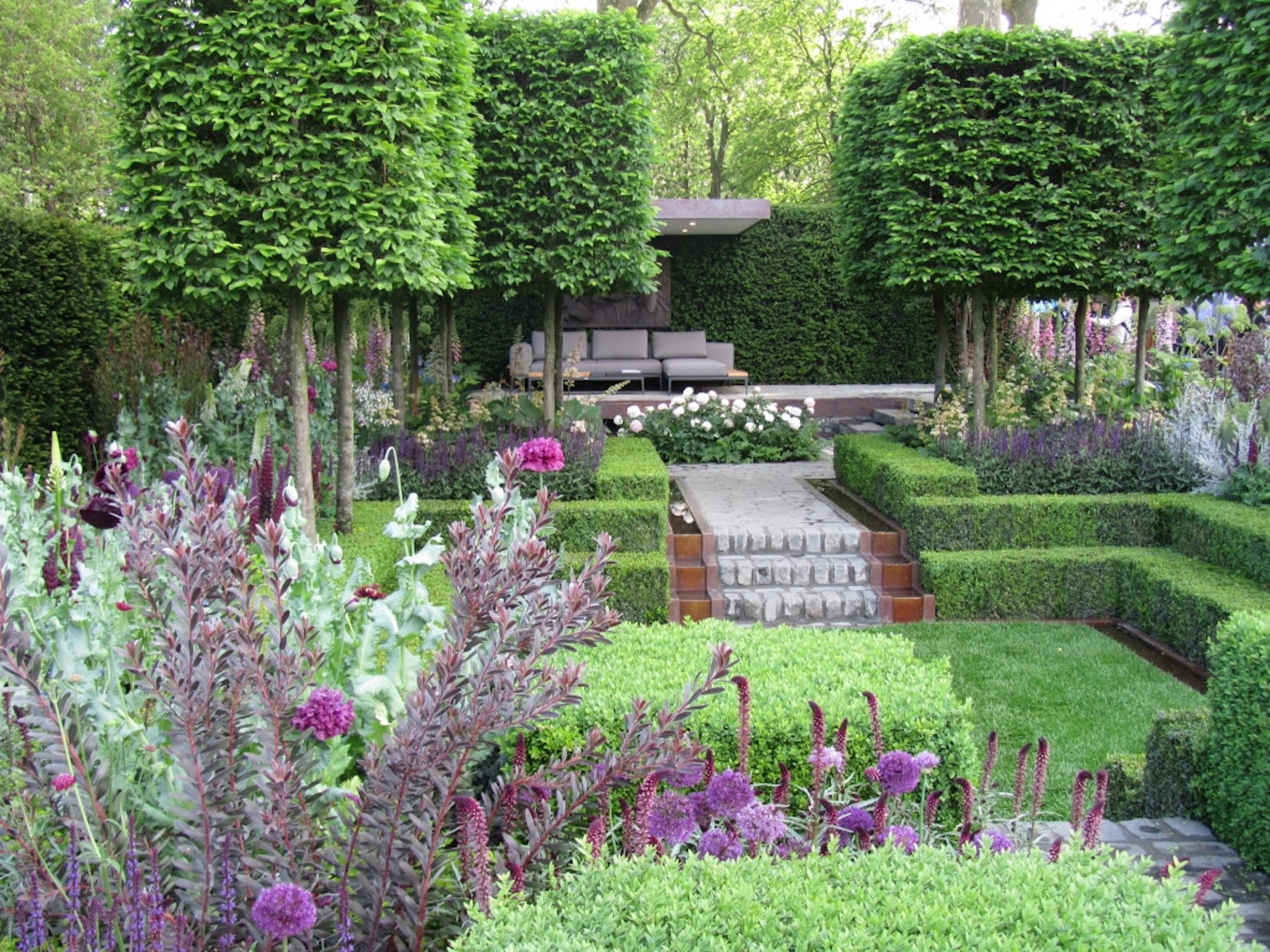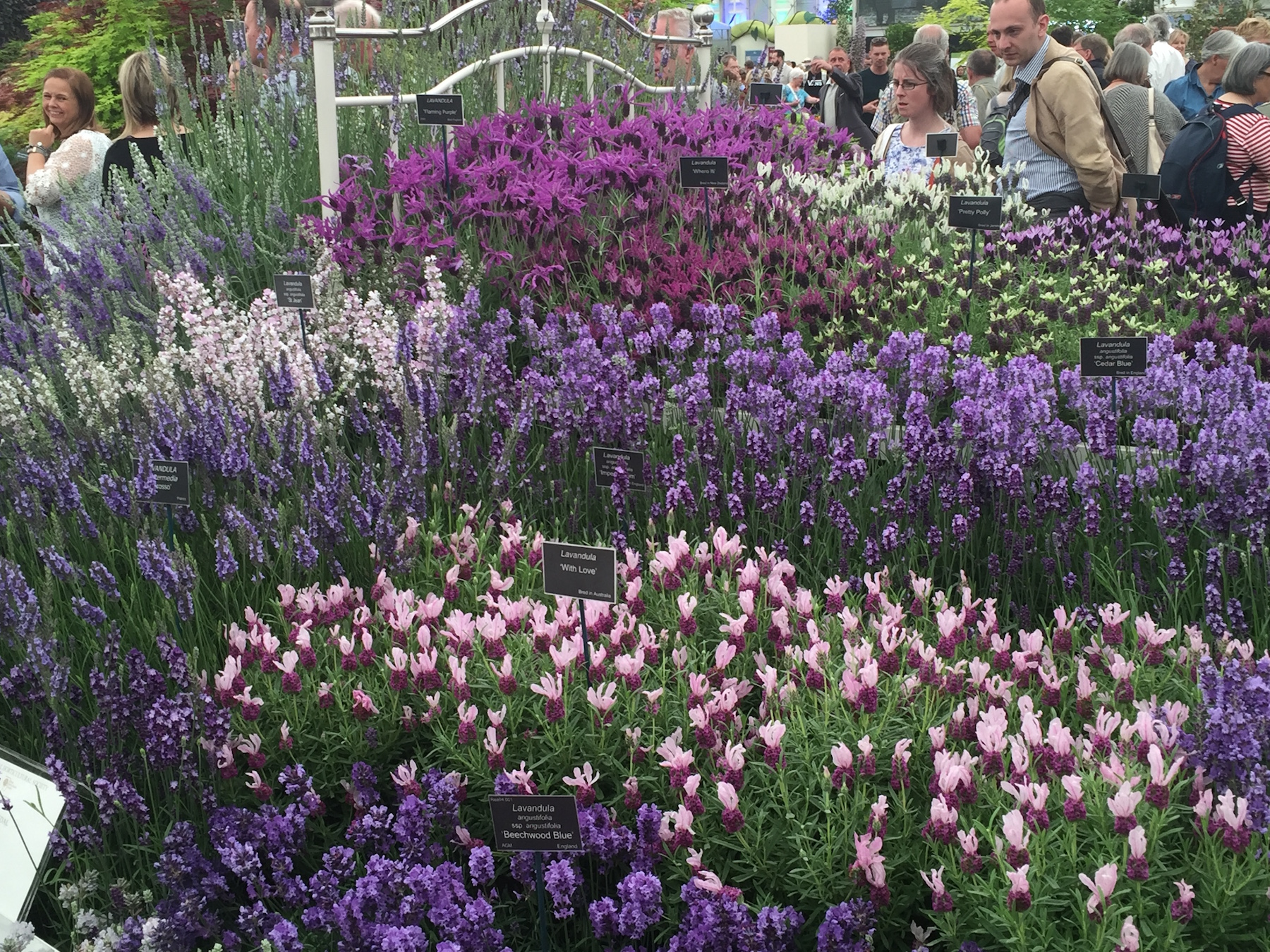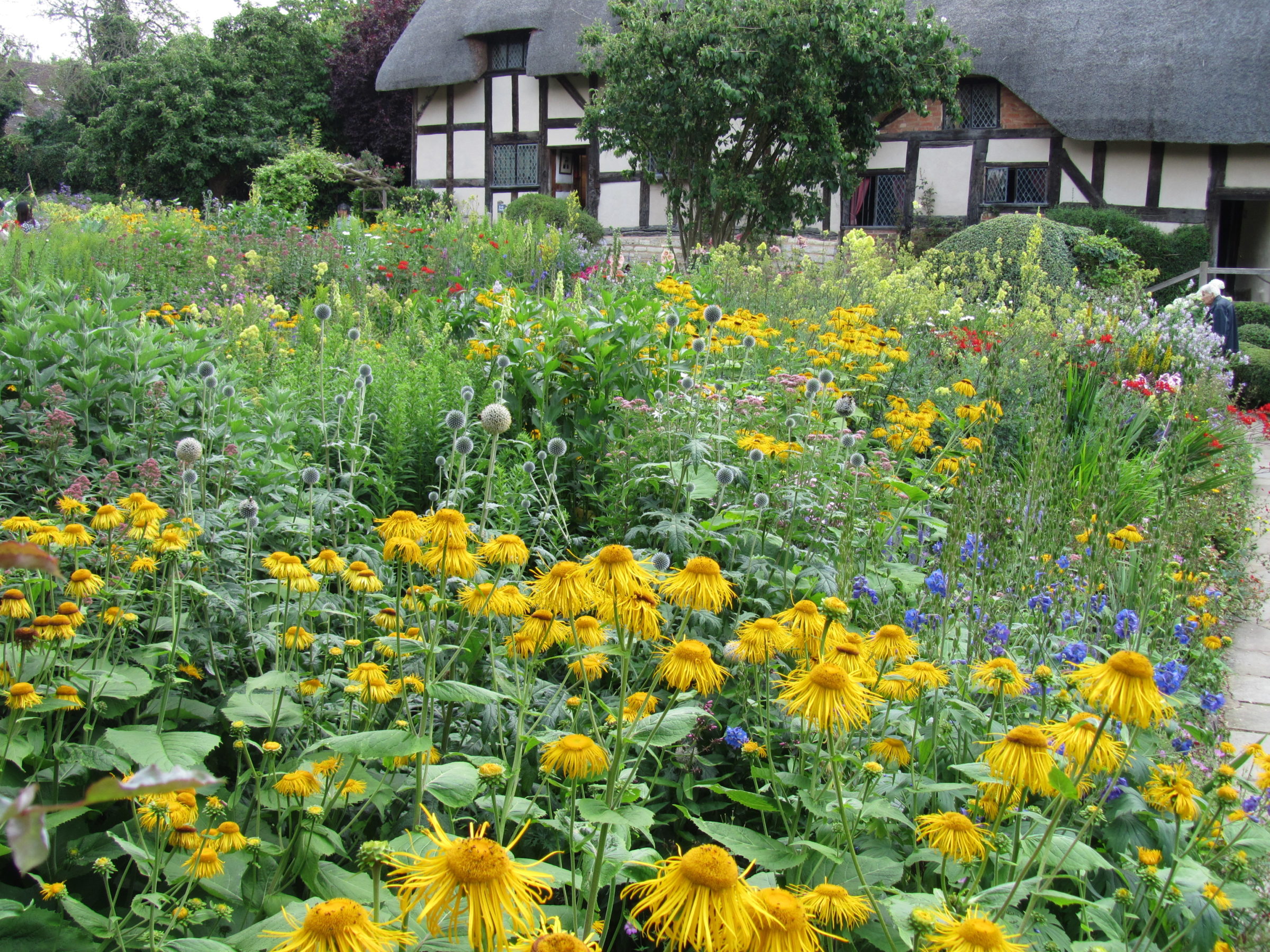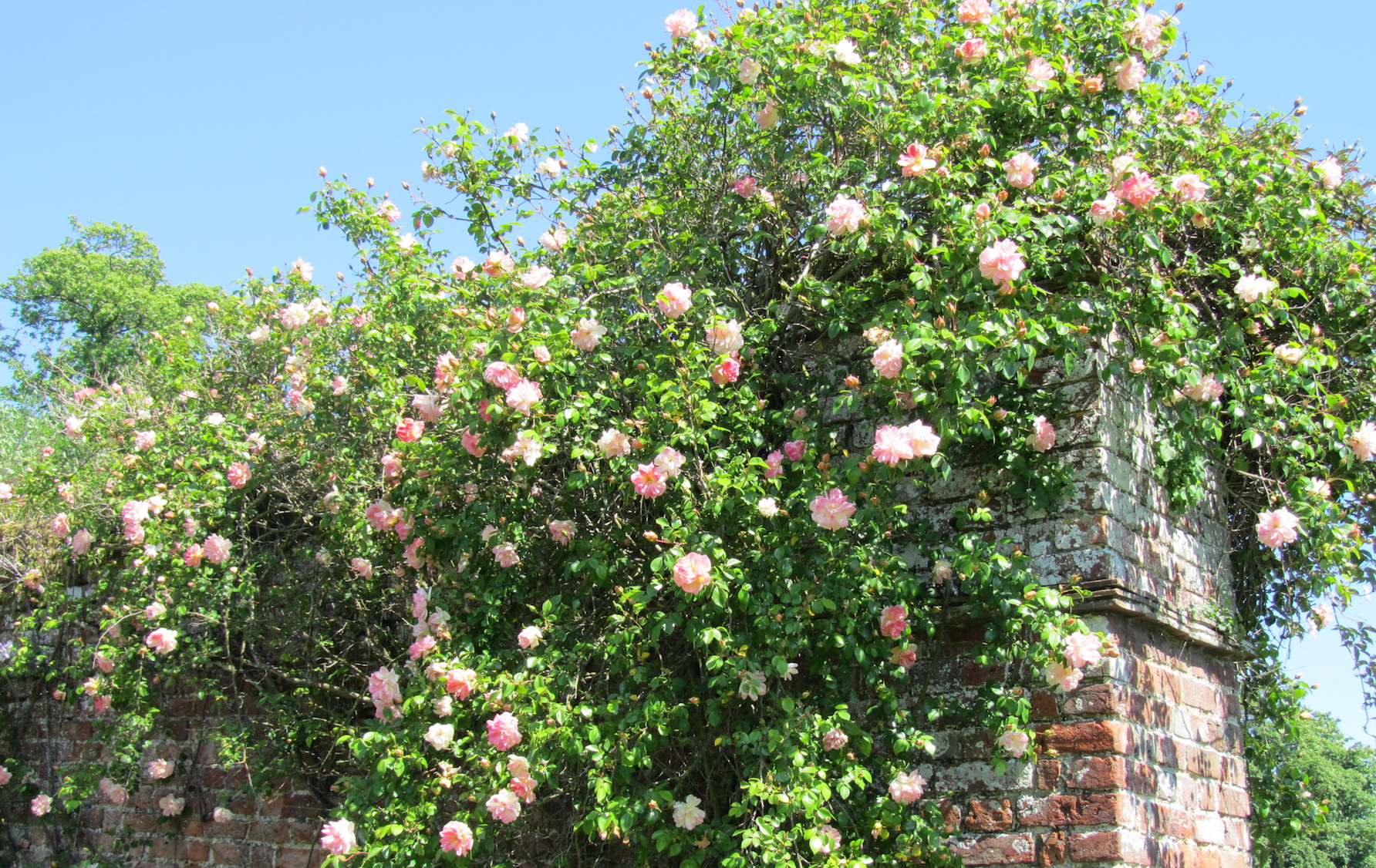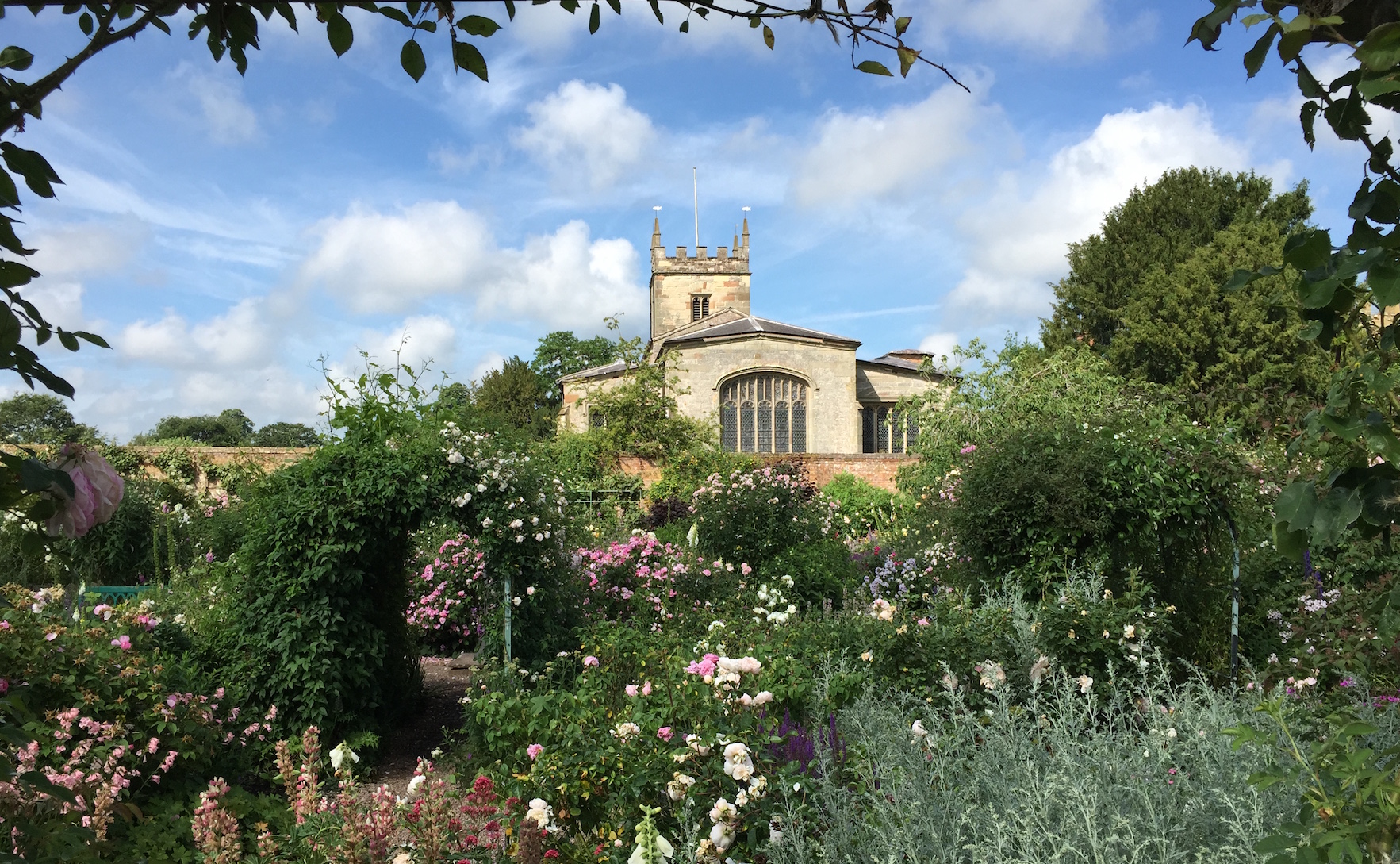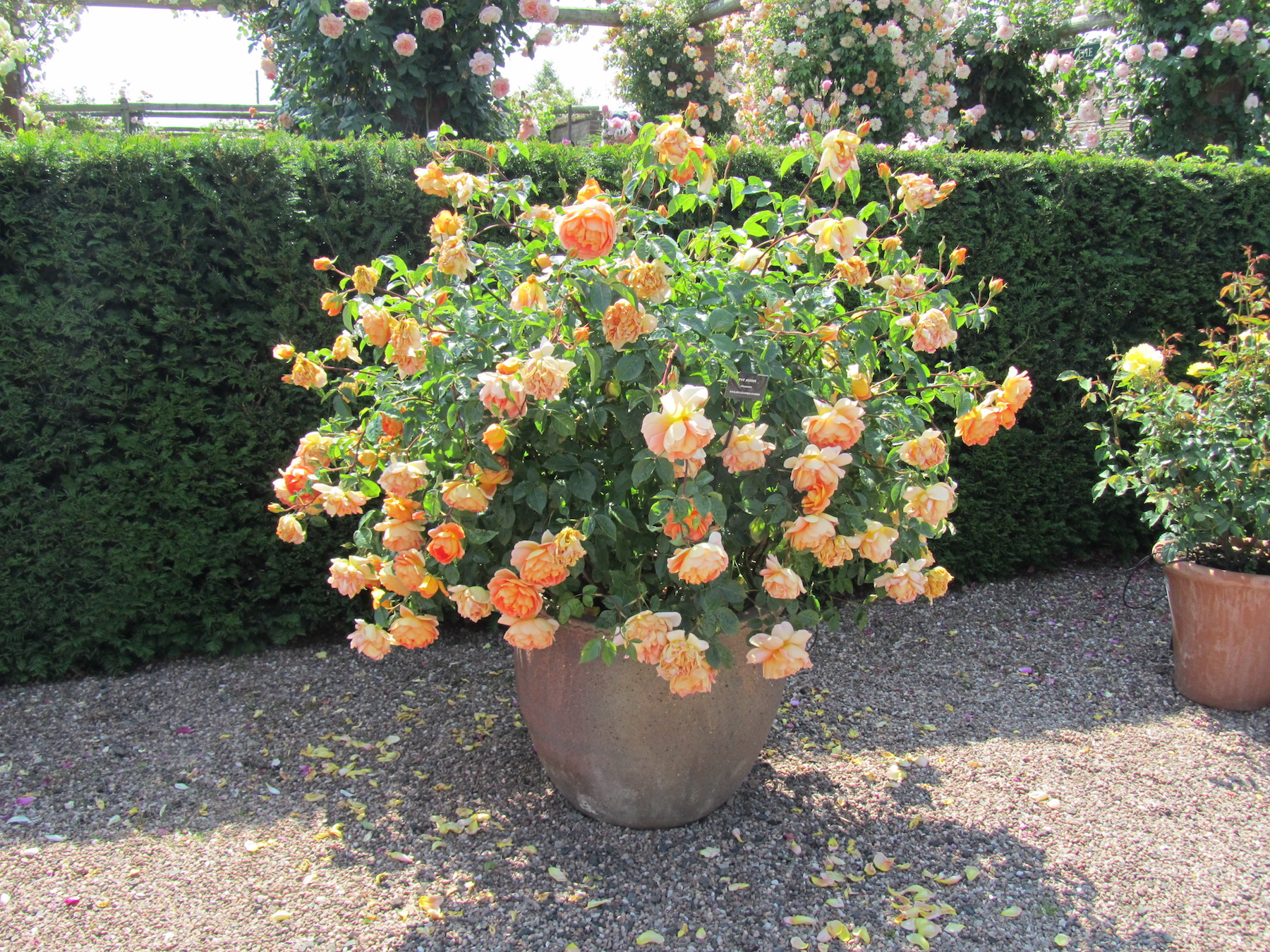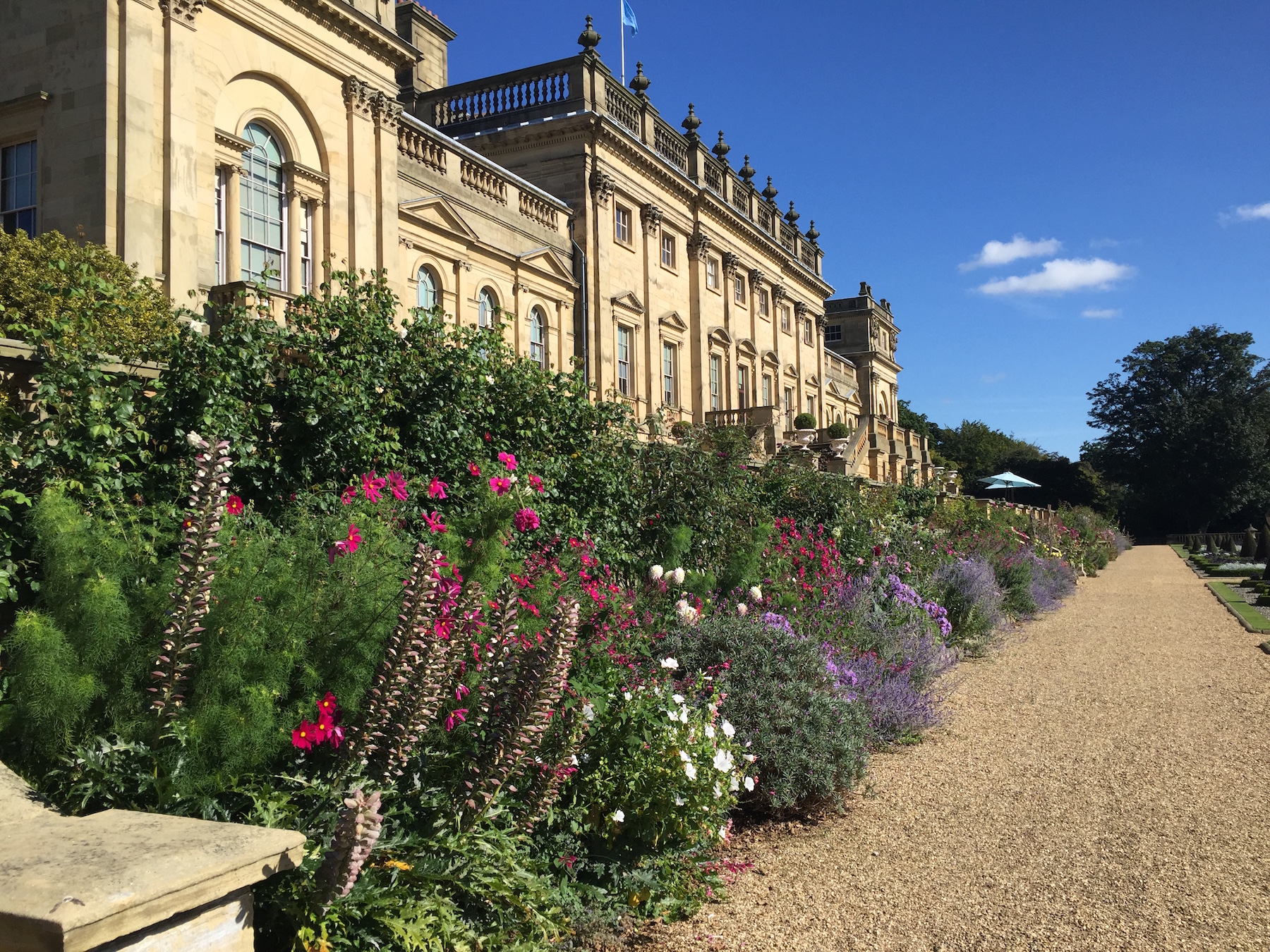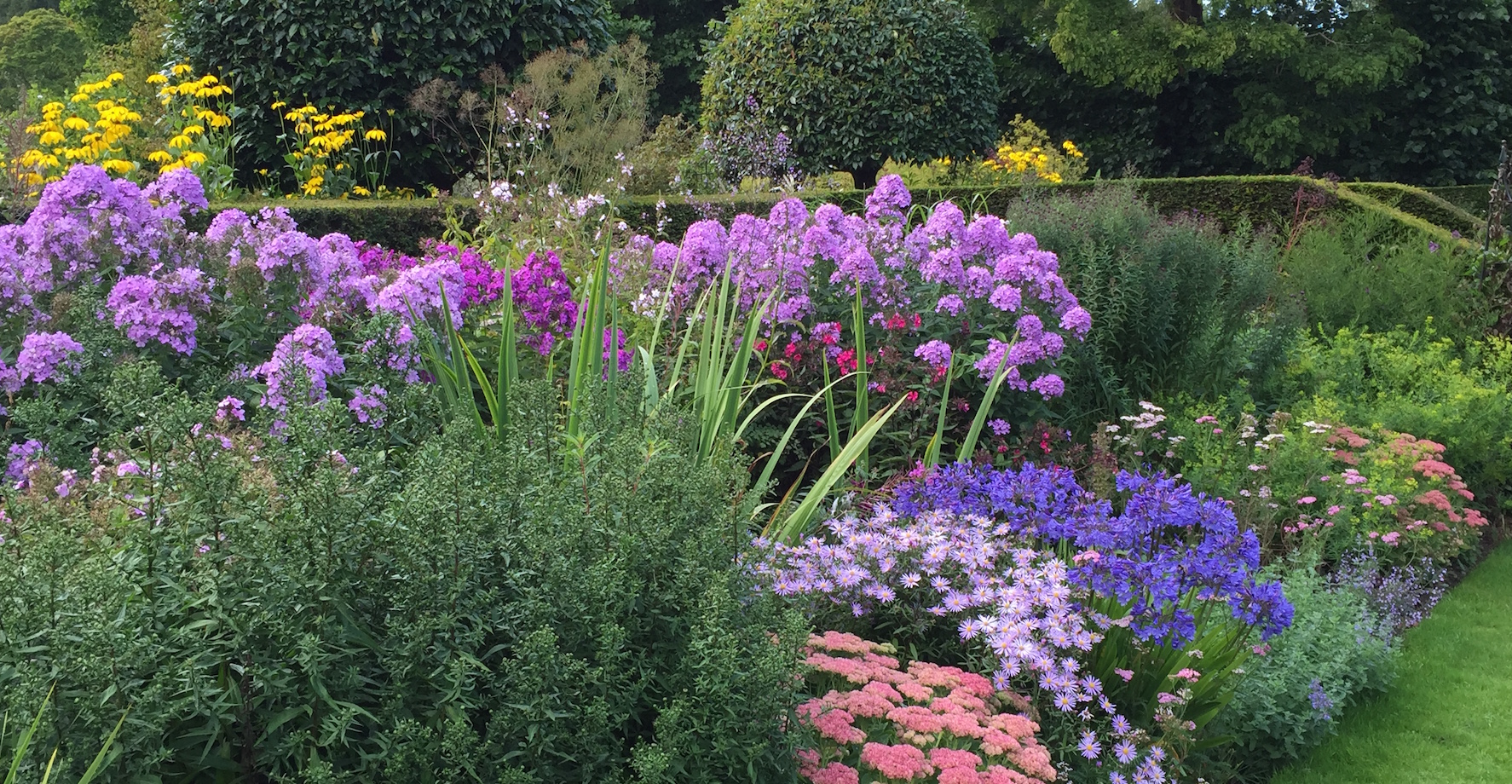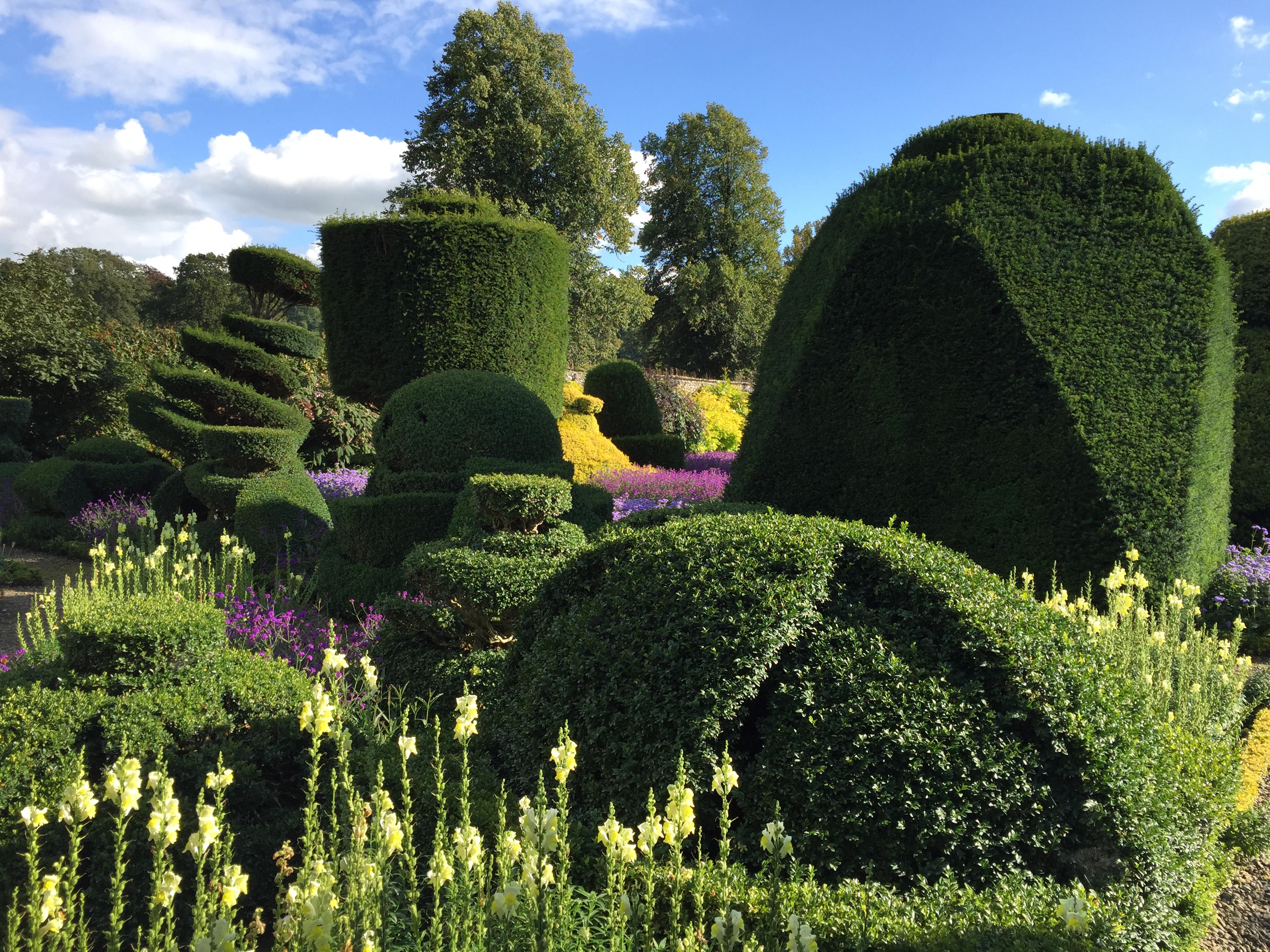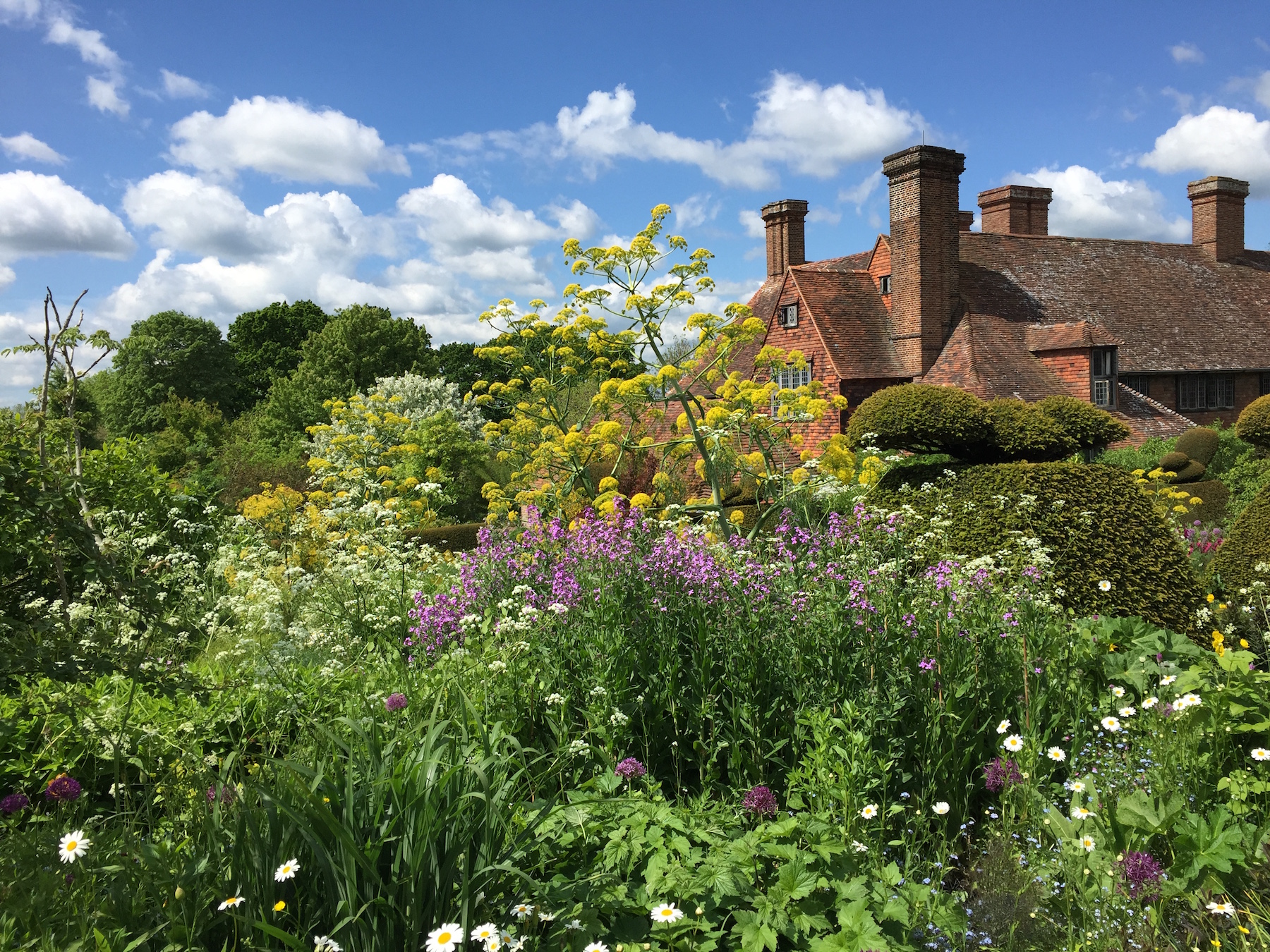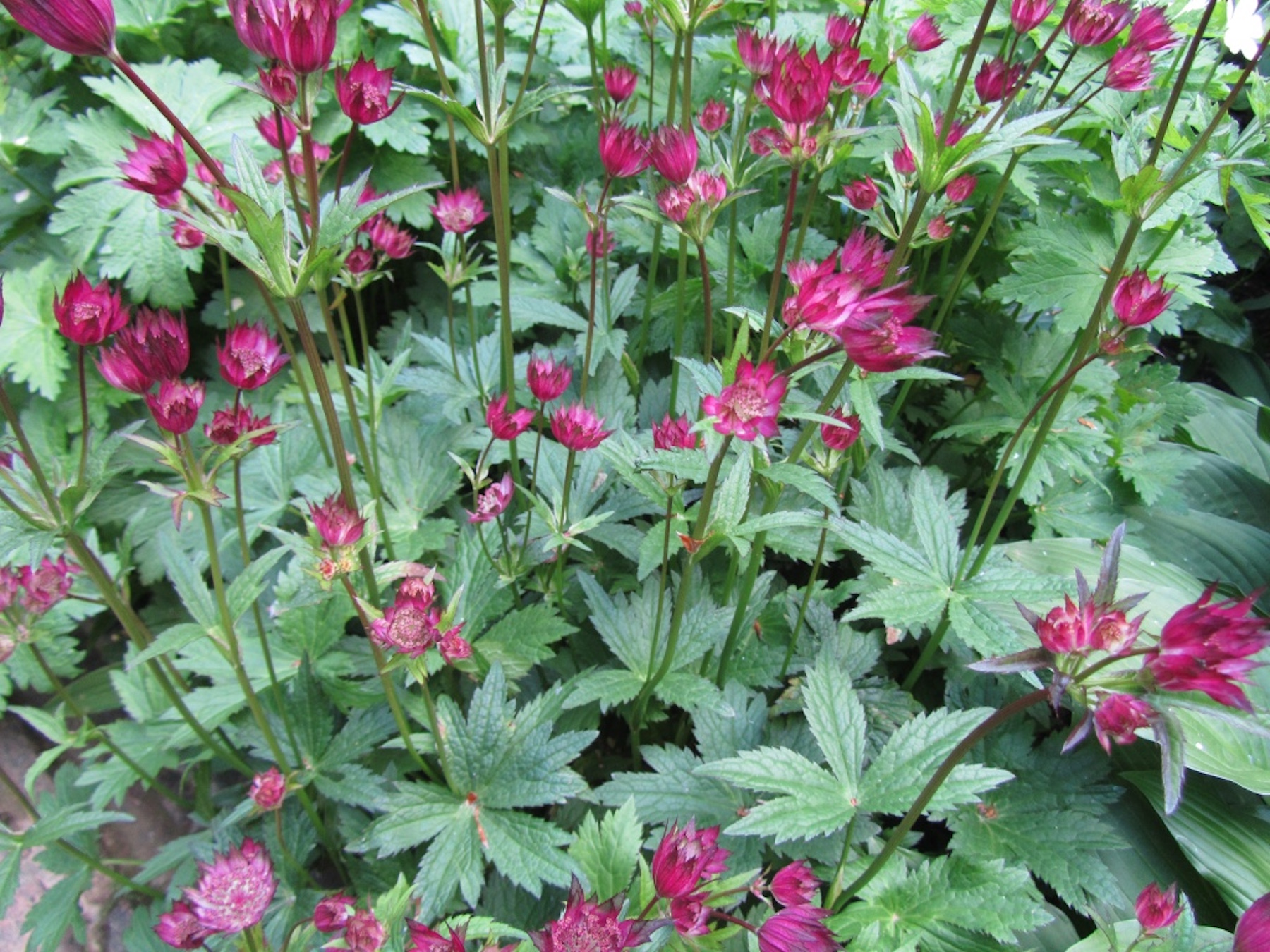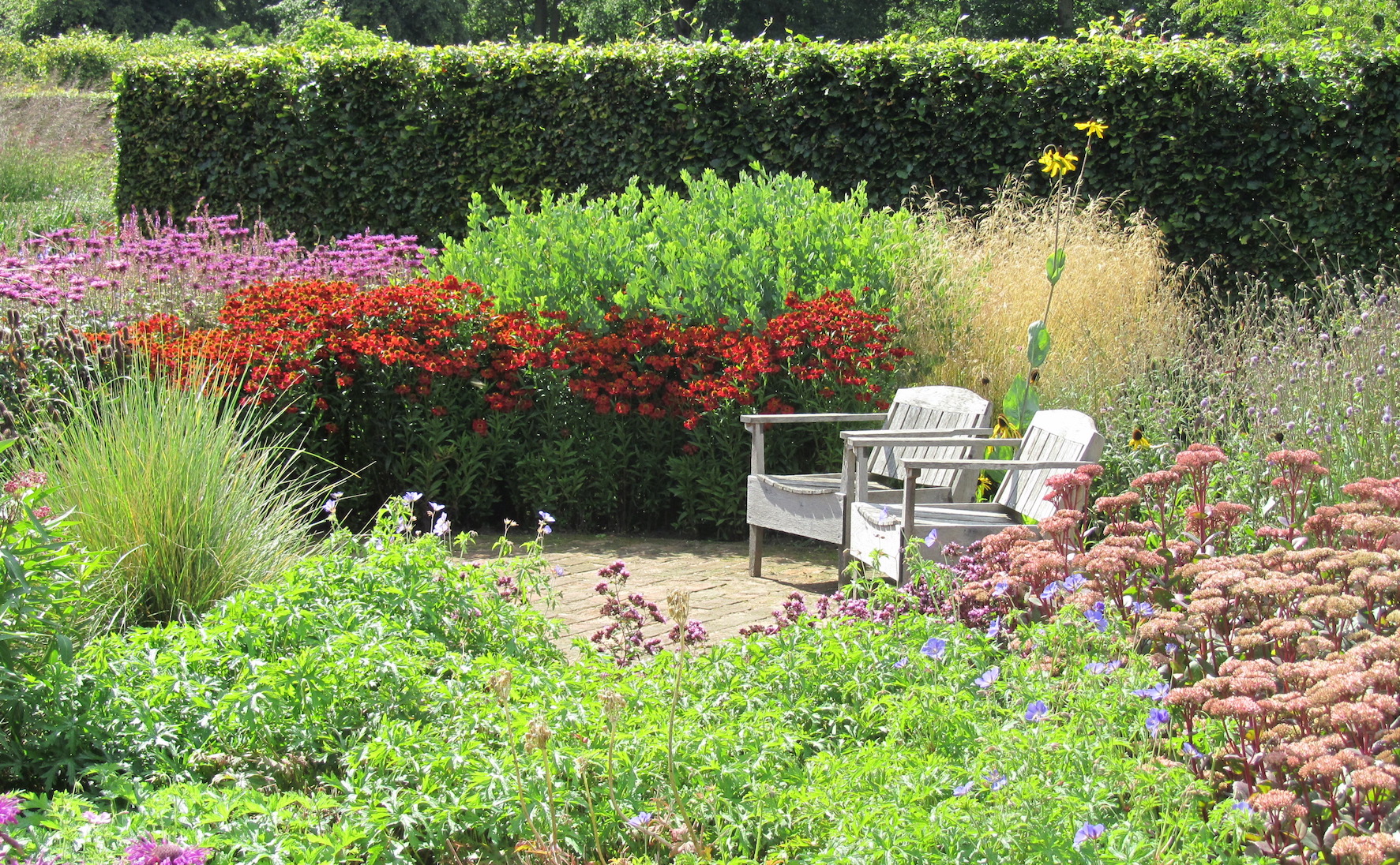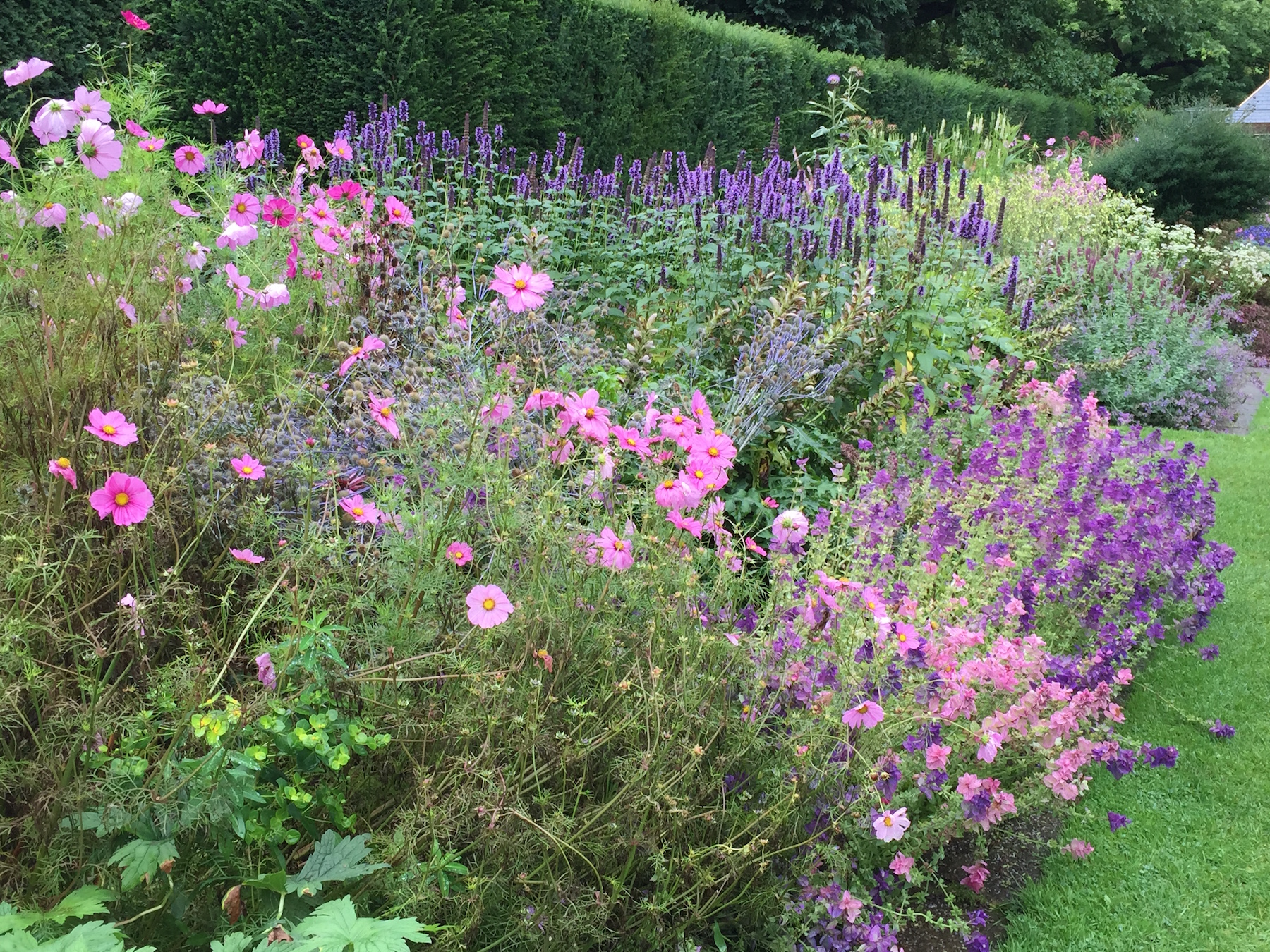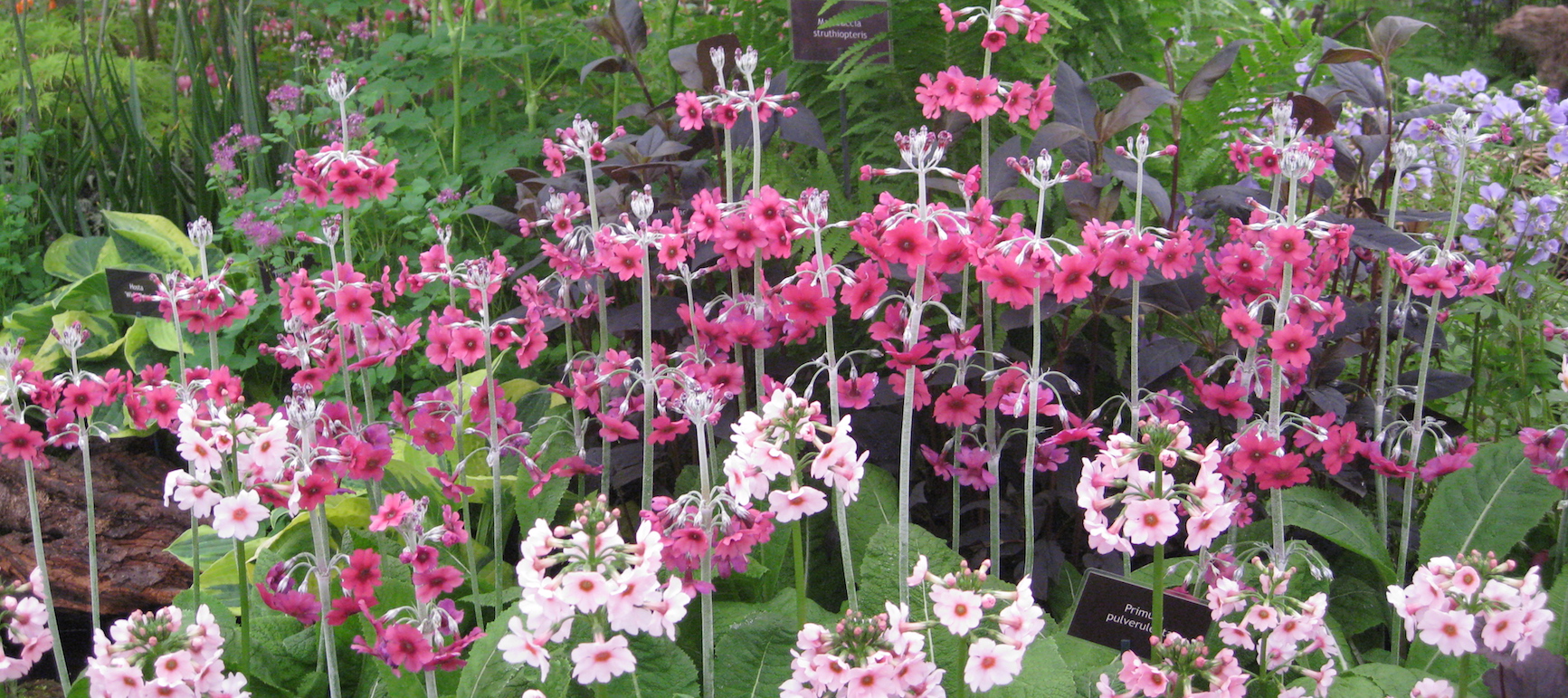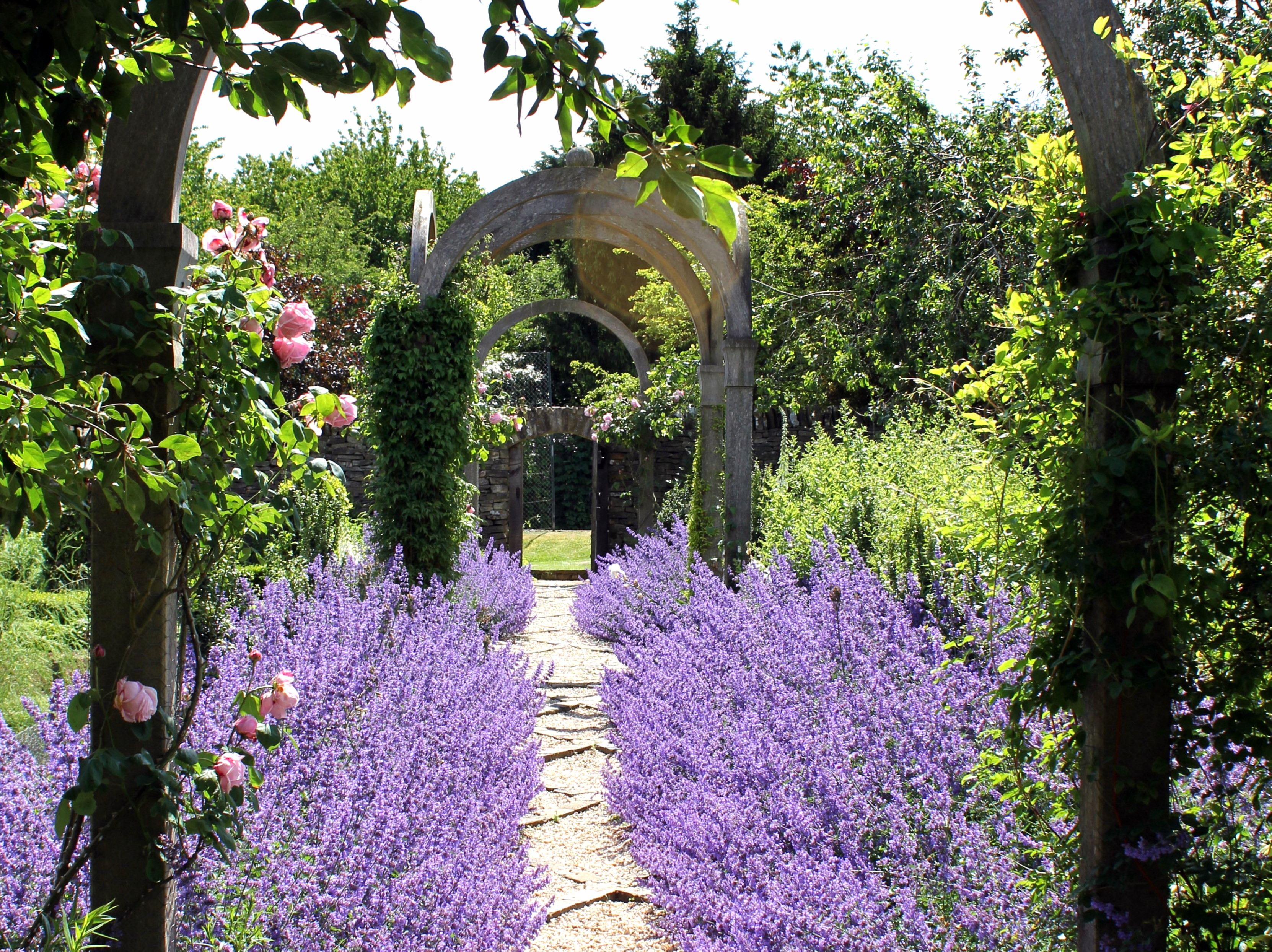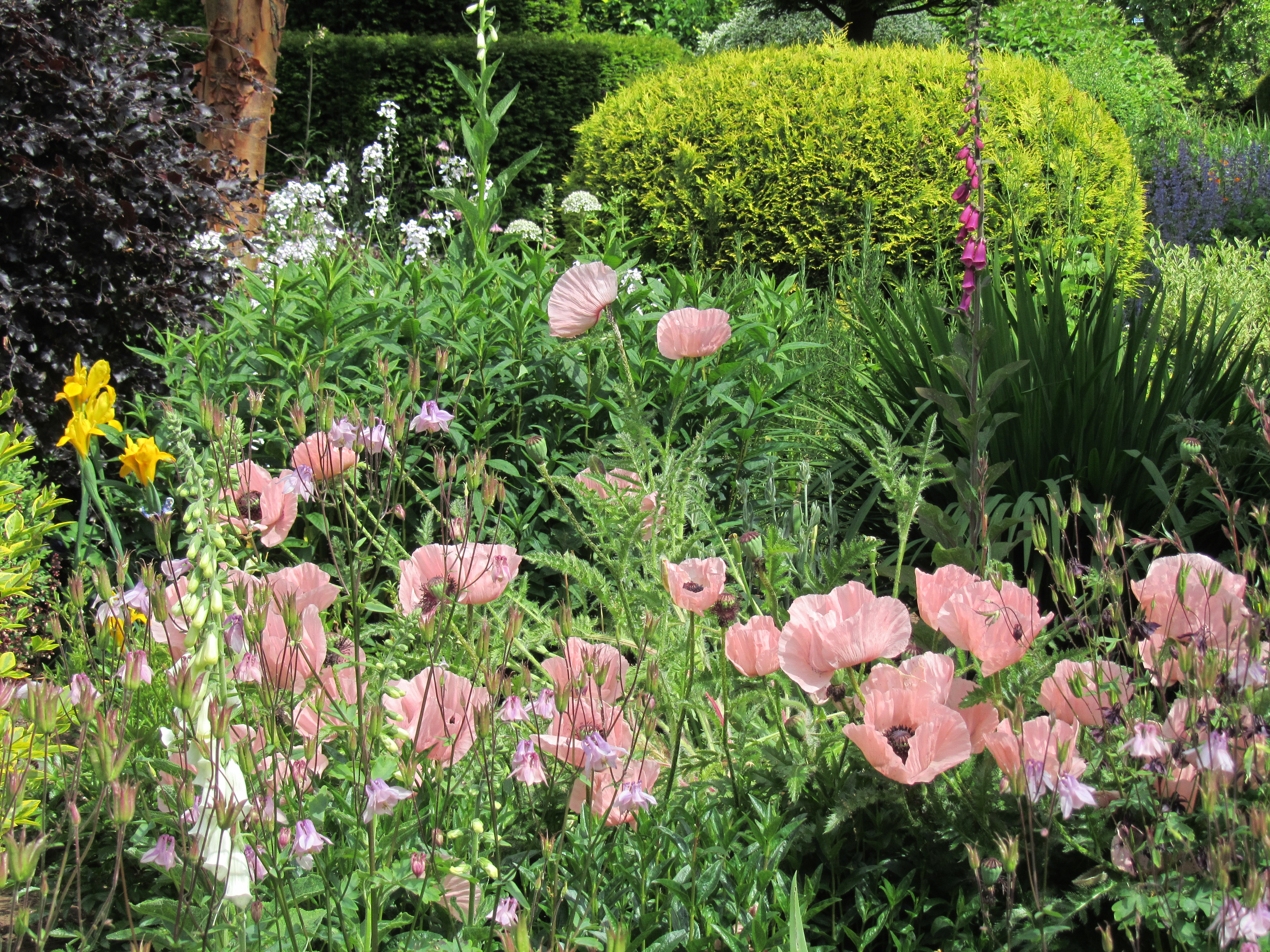Alphabet Quick Locator
A B C D E F G H J K L M N P R S T U V W
Abel, Dr Clarke (1780-1826)
Dr Abel visited Peking in a diplomatic mission, reported the Chinese elm and introduced the ornamental apricot and the shrub abelia to Britain.
Abercrombie, Thomas (1726-1806)
Thomas Abercrombie entered the service of Sir James Douglas and married a relative of his employer. He came to England and established a nursery at Hackney. His first book, Every Man his own Gardener, was published in 1767, but fearing it might be a failure, he paid Thomas Mawe (gardener to the Duke of Leeds) to put his name on the title page, although Mawe is alleged to have contributed nothing.
Adam, Robert (1728-1792)
One of four sons of the Scottish architect William Adam. Robert Adam developed his own style in planning, furniture and decoration. The towered and turreted gothic Culzean Castle in Strathclyde is a monument to his unity of design. His achievements in interior design include Osterley Park and Syon House in Middlesex; Keddleston Hall in Derbyshire; Luton Hoo in Bedfordshire; Kenwood; the mausoleum at Bowood in Wiltshire, Harewood House and Newby Hall in Yorkshire, Mellerstain in the Scottish Borders and designs for the crenellated stable yard at Castle Upton in County Antrim.
Ahmed II, Sultan (1703-1730)
Turkish sultan with a love for gardens.
Aberconway, Henry Duncan, 2nd Baron (1879-1953)
Encouraged by his mother, Laura, the first Lady Aberconway, the Second Baron Aberconway developed the magnificent gardens of Bodnant in North Wales over 50 years from 1901. Assisted over most of this time, as head gardeners, by three successive generations of the Puddle family. Lord Aberconway subscribed to many plant hunting expeditions and hybridised rhododendrons and other plants, many of which have gained worldwide fame.
Abraham, Robert
Builder of the pagoda at Alton Towers in Staffordshire in 1827.
Addison, Joseph (1672-1719)
Writer on gardens in the Spectator.
Aislabie, John (d1742)
Member of Parliament, Chancellor of the Exchequer and victim of the South Sea Bubble, John Aislabie inherited the Studley Royal estate in North Yorkshire in 1699. He designed the moon-ponds around 1725. He was one of the first to bring natural landscape into the garden, but unlike the later ‘Capability’ Brown, he contained it behind large yew hedges. His grand design for the gardens was to include the ruins of Fountains Abbey, but he had to make do with the view. Only when his neighbour died was his son William able to buy the ruins and complete the plan for the green-garden of Studley Royal.
Babur, Emperor (1483-1530)
An ambitious Mughal emperor who owned 10 gardens. His tomb is in a garden, Bagh-i Babur, in Kabul.
Backhouse, James (1794-1869)
York nurseryman, botanist and Quaker missionary, James Backhouse travelled the Highlands of Scotland in search of rock plants. He undertook a tour of Australia in 1813 and South Africa in 1838-40, collecting seeds and bulbs for W.J.Hooker at Kew and for Backhouse Nursery at Acomb. He also travelled to Norway in 1853 and 1860 on Quaker missionary journeys. His journals from the two journeys, which brought him all along the coast to the very North of Norway, are full of botanical descriptions. He also sent plant specimens home to England. His journals are in the library of Friends House, Euston Road, London. Begonia sutherlandii flowered for the first time in Britain in his nursery in 1867.
Bacon, Sir Francis (1561-1626)
Sir Francis, the English philosopher, inherited his father’s estate at Gorhambury in Hertfordshire in 1602. He gardened here extensively and his notes outlining a scheme to make a four-acre water garden exist in the British Museum. Bacon’s garden has gone, but his essay ‘Of Gardens’, published in 1625, a year before his death, remains as a delightful monument to his enthusiasm, though not to the clarity of his presentation.
Banks, Sir Joseph (1744-1820)
President of the Royal Society for over 40 years, Joseph Banks was a wealthy amateur scientist who accompanied Captain Cook on his 1768-71 expedition to the Pacific. He financed the botanical side of the expedition to the tune of £10,000. Appointed horticultural and botanical advisor to Kew Gardens in 1771, Sir Joseph was patron of plant collectors Francis Masson, William Kerr, James Bowsie and Alan Cunningham. (species associated with him include the name ‘banksii’). A large archive of Sir Joseph’s work is to be found at the National History Museum website.
Barry, Sir Charles (1795-1860)
A leading Victorian architect who designed the Houses of Parliament (London); the house and terraces at Cliveden (Buckinghamshire) and laid out the terrace at Harewood House, 1840s (Yorkshire), the gardens at Dunrobin Castle, 1850 (Sutherland) and two Italian gardens at Trentham (Staffordshire) and Shrubland Hall, late 1840s (Suffolk).
Bartram, John (1699-1777)
Born in Darby, Pennsylvania, son of John Bartram a Quaker farmer, he became Chief Botanist of the American colonies and was the founder in 1728 of the Philadelphia Botanical Garden at Kingsessing. John Bartram was the first native American botanist. He was responsible, through his correspondence with Peter Collinson, for introducing many American trees to Europe. Although he never visited Britain, in 1765 he was appointed Botanist to King George III. Linnaeus called him ‘the worlds greatest botanist’. Bartramia, a genus of mosses is named in his honour. His son William accompanied him on some of his journeys and documented plants, animals and native peoples of North and South Carolina, Georgia and Florida. He published a series of writings with charming illustrations in 1791 under the name Travels, which influenced the 19th century romantic movement. Some of his drawings are held by the British Museum of Natural History.
Beaufort, Mary Somerset, Duchess of (1630-1714)
One of the first English plantswomen of real distinction. She was particularly interested in exotics, which she had recorded as watercolours.
Beauharnais, Josephine de (1763-1814)
Born de la Pagerie, Josephine married the Vicomte de Beauharnais and then Napoleon I, from whom she was divorced in 1809. Empress Josephine gathered a famous nineteenth century collection of roses at the Château de Malmaison. The roses she collected may still be seen at l”Haÿ-les-Roses in Paris.
Beaumont, Guillaume
Gardener to King James II and designer of the late 17th century exotic topiary garden at Levens Hall, Cumbria, between 1690 and 1720.
Bidwill, John (1815-1853)
Early collector of alpine plants, giving the name bidwillii to a number of plants.
Blackburne, John (1694-1786)
One of the most influential plantsmen in the North of England in the 18th century, John Blackburne was a wealthy English landowner and owner of a saltworks in Liverpool who built extensive hothouses at his residence at Orford Hall near Warrington. The first to fruit pineapples in Lancashire, Blackburne maintained a large collection of succulent plants which were partly obtained from Lord Petre of Thorndon Hall, Essex. James Bolton, the Yorkshire botanical artist, praised his ” extensive collection of rare and valuable plants in a rich and beautiful garden “. His name, and that of his daughter Anna, is commemorated by the fan palm Sabal blackburniana.
Blaikie, Thomas (1751-1838)
One of the most remarkable gardeners of the late eighteenth and early nineteenth centuries, Thomas Blaikie, was a Scotsman who spent the greater part of his life in France. He is chiefly noted for the fact that he laid out the gardens of Malmaison for the Empress Josephine. He was sent abroad in 1775 by Dr Fothergill (who had remarkable botanic gardens at Upton near Stratford.) and Dr Pitcairn, to search for rare alpine plants in Switzerland. After a sojourn in Switzerland he entered the service of the Comte de Lauraguais, then that of the Comte d’Artois, and worked under the latter’s architect, Belanger.
Thomas Blaikie made the original plan for the remarkable garden at Bagatelle. He also renovated Parc Monceau in Paris in 1786.
Blomfield, Sir Reginald (1856-1942)
In his book Formal Garden in England (1892) he urged a return to simpler architectural formalities of Renaissance and seventeenth century gardens. Designed terrace garden at Mellerstain in the Scottish Borders, Moundsmere Manor (Hampshire) and Sulgrave Manor garden. Updated Godinton House and redesigned the gardens including the planting of the famous yew hedge, shaped to repeat the gable form seen on the house.
Bramante, Donato (c.1444-1514)
Renaissance architect and garden designer who designed the Cortile del Belvedere at St Peter’s Basilica in Rome.
Bridgeman, Charles (d1738)
He worked on a massive scale, creating gardens that used the grass-clad shape of the land itself. The invention of the ha-ha is attributed to Bridgeman. His designs were used at Claremont (ampitheatre), Rousham (Oxfordshire), Blenheim Palace (Oxfordshire), Stowe (Buckinghamshire), Wimpole Hall, Wolterton Park, Kew and in Kensington Gardens in London.
Brown, Lancelot (‘Capability’) (1716-1782)
Capability Brown (This name was given him because of his habit of saying that a place had great “capabilities”) was born in Northumberland, the son of a farm labourer. Influenced by William Kent, he developed his ideas as an under-gardener at Stowe Park (Buckinghamshire) in Lord Cobham’s service. He was then head gardener to the Duke of Grafton, and laid out his first landscape at his Wakefield Estate. In 1764 he was appointed Royal Gardener at Hampton Court Palace until his death in 1782. The famous vine there is said to have been planted by him. His grave and memorial may be found at Fenstanton parish church in Huntingdon. His influence was great, and owing to him, hundreds of fine formal gardens were destroyed to make (Serpentine) “landscapes”.
His designs were used at Audley End (Essex), Berrington Hall (Hereford), Blenheim Palace 1760 (Oxfordshire), Bowood (Wiltshire), Broadlands (Hampshire), Burghley House (Lincolnshire), Cardiff Castle 1777, Burton Constable Hall (Yorkshire), Cadland, Charlecote Park (Warwickshire)), Chatsworth (Derbyshire), Chilham Castle, Claremont 1769 (Surrey), Clumber Park (Nottinghamshire), Croome 1751 (Worcestershire), Euston Hall (Suffolk), Harewood House (Yorkshire), Luton Hoo, Sheffield Park (Sussex), Syon Park (Middlesex), Warwick Castle (Warwickshire), Wimpole Hall (Cambridgeshire), Wrest Park (Bedfordshire).
Buchanan, John (1819-1898)
Missionary collector in Central Africa. He was sent as agriculturist to the Church of Scotland Mission to Nyassaland in 1876. He sent over 1,000 dried specimens to Kew, besides introducing various plants. Plants associated with him bear the name buchananii
Candolle, Augustin-Pyramus de (1778-1841)
Swiss professor of Botany at Montpelier in 1808. Published Plantarum Historia Succulentarum, Astragologia and other works.
Cane, Percy (1881-1976)
An artist, architect and writer over many years, in 1930 Percy Cane founded and edited the quarterly journal Garden Design. He wrote Garden Design of Today (1934), The Earth is My Canvas (1956) and The Creative Art of Garden Design (1967). His curvey borders were seen as innovatory in the 1930s. The results of his work may still be seen at Dartington Hall at Totnes, Hascombe Court at Godalming, Hungerdown House at Seagry, Sutton Park (North Yorkshire), Falkland Palace (Fife) and many other places including the palace grounds at Addis Ababa.
Clusius, Carolus (Charles de L’Ecluse) (1526-1609)
Flemish doctor and botanist who planned Europe’s earliest botanic garden in the Hortius Botanicus in Leiden, Holland. As Prefect of the Royal Medicinal Garden in Prague, he started a collection of tulips from seed. He subsequently became Prefect of the botanic garden in Holland and over six hundred bulbs were planted at Leiden by 1593.
Colenso, William (1811-1899)
A missionary printer who, on an overland walk in the mountains of North Island of New Zealand in 1841-42, collected over 1,000 botanical specimens new to science. He went with J.D.Hooker on many botanical excursions. Species associated with him include the name ‘colensoi’.
Compton, Bishop Henry (1632-1713)
In the reign of William & Mary, few gardens were so celebrated as those of Fulham Palace, when Henry Compton was Bishop of London. He was the first great patron of botany in North America, sending botanically trained missionaries to the Indians. He spent thirty eight years at Fulham.
Compton, Major Edward (d1977)
Descendant of Bishop Henry Compton. He is quoted as saying of the fine house with uninspiring garden that he inherited in 1920 at Newby Hall in Yorkshire, that it was “..a lovely picture but no frame”. He set about creating a garden of superb perspective and content.
Copijn, Hendrik (1842-1923)
Dutch landscape architect Hendrik Copijn designed the gardens of the Wilhelminapark (Utrecht) and Kasteel Haarzuilens. Lodewijk Copijn (1878-1945) designed the Julianapark in Utrecht.
Crowe, Dame Sylvia (1901-1997)
Responsible for landscaping new towns at Warrington (Cheshire) and Washington (Co Durham). Her designs were used at Blenheim Palace (Oxfordshire), Cottesbrooke Hall (Northamptonshire), Lexham Hall (Norfolk), Oxford Botanic Garden and a park in Canberra (Australia).
Cunningham, Allan (1791-1839)
Sent by Kew to Australia, stopping in Brazil for two years, Cunningham explored extensively in Australia and was the first Kew collector to visit New Zealand. On his travels he took a bag of peach stones and seeds of other fruits and trees, planting them wherever he thought they might be of benefit to future travellers. He finally became superintendent of Sydney Botanic Garden, replacing his brother who was killed by aborigines in 1835. Many plants associated with him include the name cunninghamii.
Danvers, Henry (1573-1644)
Later to become the Earl of Danby, he was patron of Oxford University’s first physic garden in 1621.
David, Jeanne Pierre Armand (1826-1900)
In 1862 Father David was sent to China as a French missionary. He had an interest in botany, zoology, geology and ornithology. For the Musee d’Histoire Naturelle in Paris he recorded 250 new plant species including Davidia involucrata, Acer davidii, rosa davidii, Astilbe chinensis var. davidii, Buddleja davidii, Chrysosplenum davidianum, Clematis armandii, Lilium davidii, Pinus armandii, Populus tremula var. davidiana, Primula davidii, Prunus davidiana, Sophora davidii, Stranvaesia davidiana.
Delavay, Father Jean Marie (1838-1895)
The first European botanist in western China. He discovered many garden plants in Yunnan. A magnolia and silver fir bear his name.
Don, George (1798-1856)
The first plant hunter sent out by the Horticultural Society, he collected both in West Africa and South America between 1820 and 1830. He was a native of Forfar in Scotland.
Douglas, David (1799-1834)
A native of Scone in Scotland, David Douglas studied at the Glasgow Botanic Gardens. On the recommendation of Sir William Hooker, he was employed by the Horticultural Society to travel to America’s west coast and gather vast quantities of seed from species hitherto unknown in the UK, including the Douglas fir and Sitka spruce. Plants he introduced include Ribes sanguineum, Garrya elliptica, Clarkia, Godetia, Gaillardia, Lupin, Collinsia, Mimulus, Eschscholtzia and Penstemon. He met with a tragic end. When collecting in the Sandwich Islands, he fell into one of the pits made to catch wild bulls, and was gored to death.
Duchêne, Achille Jean Henri (1866-1947)
French architecte paysagiste who specialised in restoration of classical French gardens such as the châteaux of Vaux-le-Vicomte, Courances and Corbeil Cerf in France and Schlosspark Nordkirchen in Germany. Associated with pools and Mermaid Fountain at Blenheim Palace in Oxfordshire.
Duchesne, Antoine Nicholas (1747-1827)
French botanist and writer.
Du Perac (1532-1604)
Artist and ‘Grand Architect du Roi’ to Henry IV of France in 1582.
Elwes, Henry John (1846-1922)
Co-author with Augustine Henry of the great book Trees of Great Britain and Ireland. Visited Sikkim in 1870.
Emes, William (1730-1803)
His designs, in the ‘landscape’ style were used at Belton House, Lincolnshire, and Erddig, Clwyd.
Euphorbus
First century AD Greek physician-in-ordinary to King Juba of Mauretania whose name was given by Dioscorides to the genus Euphorbia .
Evelyn, John (1620-1706)
Born in Surrey into a family that owned the monopoly on the manufacture of gunpowder in England, he was able to devote his life to intellectual pursuits. Besides translating the most noted French gardening books, Evelyn was the author of Kalendarium Hortense. His Diary is full of references to gardens. He made a famous garden at Sayes Court, and he outlined a book on gardening, which, had he completed it, would have been of the first importance. 1648 portrait in National Portrait Gallery.
Farrand, Beatrix (1872-1959)
Her designs were used at Dartington Hall and her beautifully documented city garden of Dunbarton Oaks, Washington DC.
Farrer, Reginald (1880-1920)
Botanical writer and plant-hunter, nephew of Grace, Lady Campbell, founder of Crarae glen garden in Argyll. He was born in London and brought up in Ingleborough where he became interested in rock garden plants. He brought his personality to the page with My Rock Garden and The English Rock Garden. In 1913 he visited Kansu Province in northwest China and in 1919 visited Yunnan with Euan Cox, who introduced Juniper coxii, the coffin-tree juniper. He died on a Burmese mountain. Plants discovered by him include Gentiana farrerii, Cypripedium farrerii and Viburnum fragrans.
Fish, Margery (1888-1969)
Author of We Made a Garden and from 1937 with her husband Walter, the creator of the cottage garden at East Lambrook Manor. Through her books, broadcasts and lectures she became a popular and influencial plantswoman.
Forestier, Jean Claude Nicholas (1861-1930)
Nicholas Forestier redesigned the garden of Bagatelle in the Bois-de-Boulogne. He designed many gardens in Spain and also worked in the USA and South America.
Forrest, George (1873-1932)
George Forrest was the greatest of all collectors of rhododendrons, introducing hundreds of species from China and Tibet to Edinburgh Botanic Garden, including R.giganteum and R.sinogrande. Sponsored by A.K.Bulley of Ness, he went to China in 1904. He also specialised in primulas. He introduced a beautiful silver fir and a snakebark maple, both called forrestii.
Forster, Johan Reinhold. (1729-1798)
Sailed on Cook’s second expedition aboard Resolution as naturalist, accompanied with his son George as artist. He was of mixed Scottish-Prussian descent. He wrote Characteres Generum Plantanum, De Plantis Esculentis, A Voyage Round the World (1777) and four other books.
Forsyth, William (1737-1804)
Superintendent of Kensington Gardens. The shrub Forsythia is is named after him.
Fortune, Robert (1812-1880)
A native of Berwickshire and a student at the Edinburgh Botanic Garden, and at the Hoticultural Society gardens at Chiswick, he was sent to China by the Horticultural Society in 1843. The first collector in China to have relative freedom, he introduced many essential garden plants to the western world. His trees included the false larch, the Chinese plum yew, the umbrella pine and the Cryptomeria. In 1848 he returned to China and sent seeds and plants of the tea tree to India, thereby becoming the founder of the India tea industry. Fortune had remarkable adventures in China. He went to Loo Chow disguised as a local, and it was there that he obtained the double yellow rose named after him. Garden plants introduced by him include Forsythia viridissima, jasminium nudiflorum, anemone japonica, Dielytra spectabilis, Kerria japonica and the white-flowered wisteria.
Fraser, John (1750-1811)
A scotsman, John Fraser started business in London as a linen-draper near the Chelea Physick Garden. He gave up his business to become a plant collector. He crossed the Atlantic many times and some of our best known shrubs were introduced by him. Among these were Magnolia fraserii, Rhododendron catawbiense and Pieris floribunda.
Gerard, John (1545-1612)
John Gerard produced the earliest catalogue of the contents of an English garden Catalogus arborum fruticum et plantarum, dated 1596 (British Museum). He refers to the medicinal uses for herbs.
Gilpin, William Sawrey (1762-1845)
Author of Practical Hints for Landscape Gardening (1832). W.S.Gilpin, a designer with a Romantic Picturesque style, is associated with the garden designs at Balcaskie, Fife, and Scotney Castle, Kent.
Graveraux, Jules (1894-1916)
Known for his vast collection of roses at l”Haÿ-les-Roses near Paris and the help he gave in the planting of the roseraie in the garden at Bagatelle in the Bois de Boulogne.
Haast, Sir Julius von (1822-1887)
Explorer and geologist, founder of the Canterbury Museum (New Zealand). (species associated with him include the name ‘haastii’)
Hanbury, Sir Thomas (1832-1907)
Sir Thomas was a wealthy Quaker and for 20 years a silk merchant in China. In 1867 he bought the Palazzo Orengo on the Italian Riviera around which, with his eminent botanist brother Daniel, he created the celebrated garden of La Mortola. On the death of G.F.Wilson in 1902, he bought his Oakwood Experimental Garden at Wisley and the following year presented it in trust to the Royal Horticultural Society.
Hanmer, Sir Thomas
His gardening manual (1659) remained in manuscript until 1933, when it was published under the title ‘The Garden Book of Sir Thomas Hanmer’. It contains the earliest gardening calendar written in English. Hanmer, who was a Royalist, had a celebrated garden at Bettesfield, and he was chiefly interested in tulips. One of the most popular tulips of the seventeenth century, ‘Agate Hanmer’, was raised by him.
Henry, Augustine (1857-1930)
Born in Dundee, Scotland, spent his childhood in County Derry, Ireland, Augustine Henry served in the Chinese Imperial Maritime Customs. He collected for Kew for nearly twenty years. He sent over 15,000 dried specimens to Kew Gardens, of which about 500 were new species. After having studied forestry in France, in collaboration with Henry John Elwes he wrote his great book in 7 volumes, Trees of Great Britain and Ireland. He is associated (with A. C. Forbes) with plantings at Avondale Forest Park, Co Wicklow. Lilium henryi, Cypripedium henryi and Emmenopterys henryi are named after him.
Herbert, Hon William (1778-1845)
MP, poet, classicist then rector of Spofforth and Dean of the Collegiate Church of Manchester, William Herbert cultivated bulbous plants and experimented in hybridisation. His name is commemorated in the genus herbertia.
Hooker, Sir Joseph D. (1817-1911)
Son of Sir William, who he succeded as Director of Kew Gardens. Sir Joseph Hooker returned from the Himalayas in 1850 with the magnificent Sikkim rhododendrons. He introduced the Himalayan birch and reported amongst other trees, the biggest of all magnolias, Magnolia Campbellii.
Hooker, Sir William Jackson (1785-1865)
One of the worlds great botanists, became the first Director of Kew Gardens. Published part one of his Handbook of the New Zealand Flora in 1864 and part two in 1868.
Jahan, Shah (1591-1666)
Builder of the Taj Mahal at Agra in India, a sephulchre for his deceased Persian Queen Mumtaz Mahal who died in 1631. The domed, white marble building is raised on a terrace which overlooks both the great formal garden, and the river Jumna on the other side.
Jekyll, Gertrude (1843-1932)
Gertrude Jekyll’s book Wood and Garden (1899) had an enormous influence on the English (and hence the world’s) attitude to gardens. An artist of the Arts & Crafts Movement, she saw beauty in natural effects. She designed over 100 gardens during her collaboration with the younger architect Sir Edwin Lutyens. They first met in 1889 “. . . at a tea table, the silver kettle and the conversation reflecting rhododendrons, . . .” as Lutyens described it. She is associated with the garden at Bois des Moutiers, near Dieppe, and Hestercombe in Somerset.
Her planting designs were used at her own garden at Munstead Wood in Surrey, Broughton Castle in Oxfordshire, Manor House Upton Grey, Lindisfarne Castle in Northumberland, Hatchlands in Surrey and Knebworth in Hertfordshire. She also wrote Colour Schemes for the Flower Garden (1908), Wall and Water Gardens and Roses. More information on the official web site of the Jekyll estate.
Jellicoe, Sir Geoffrey (1900-1996)
Joint author with J.C.Shepherd of the classic Italian Gardens of the Renaissance. Other books were The Landscape of Man (1975) and Baroque Gardens of Austria. Sir Geoffrey’s designs were used at Ditchley Park, Sandringham, Sutton Place in Surrey, Shute House in Dorset, Cliveden (rose garden) in Buckinghamshire, Cottesbroke Hall in Northamptonshire, Mottisfont Abbey in Hampshire and the Moody Historical Gardens in Texas. He created the Kennedy Memorial at Runnymede and the fine canal at the RHS garden at Wisley.
Johnston, Major Lawrence (1871-1958)
Creator of Hidcote Manor Garden in Gloucestershire and various plant varieties including Verbena ‘Lawrence Johnston’ and Hypericum ‘Hidcote’.
Major Johnston was born in Paris of an English mother and American father. He personally collected many plants from Africa and China on a plant expedition in 1927. In the early twenties he bought La Serre de la Madonna near Menton in the South of France where he grew sub-tropical plants not suited to the Cotswolds.
Jones, Inigo (1573-1652)
English architect and painter who laid out gardens at Lincoln’s Inn and, with Isaac de Caus, at Wilton House.
Kennedy, Lewis (1789-c1877)
Grandson of Lewis Kennedy, who with James Lee founded the Vineyard Nursery in Hammersmith, supplying plants to many of Britain’s finest gardens. Around 1812 he worked at the garden of Malmaison for Josephine Boneparte. In Perthshire in 1812 he laid out the flower garden at Abercairny and from 1818 he helped create the remarkable formal garden at Drummond Castle.
Kent, William (1685-1748)
William Kent was a Yorkshireman from Bridlington who began life as a coachpainter’s apprentice in Hull, he was both an artist and an architect. Through the influence of Lord Burlington, he was made painter and architect to George II. As a garden architect he was specially noted for his treatment of water. His dominating principle was “Nature abhors a straight line”. The gardens he laid out are said to resemble Claude’s landscape paintings. The chief gardens he laid out were Stowe (Buckinghamshire), Claremont (Surrey) and Rousham House (described by Horace Walpole as “the most engaging of all Kent’s works”).
His architectural designs were used at Euston Hall, Holkham, Kew and the Horseguards, Whitehall.
Kip, Johannes (1653-1722)
Dutch engraver, known by gardeners for Britannica Illustrata, a survey of English castles, palaces, and country houses during the reign of Queen Anne. He was assisted in the making of some of these views by Leonard Knyff, also Dutch, who did drawings from which they were engraved. Illustrations include Acklam (Cleveland), Bredby (Derbyshire), Brympton (Somerset), Cashiobury (Hertfordshire), Kirkleatham (Cleveland), Eaton Hall (Cheshire), Fair Lawn (Kent), Haigh (Lancashire), Hutton-in-the-Forest (Cumbria), Newby Hall 1710, Constable Burton (Yorkshire), Doddington Hall 1700 (Lincolnshire), Stanway House 1713 (Gloucestershire), Knole, Penshurst Place 1700 (Kent), Hampton Court (Surrey)
Kirk, Sir John (1834-1922)
Accompanied Livingstone when he discovered Lake Nyassa and sent plants home from tropical Africa. At his own expense he subsequently made and maintained a botanical garden at Zanzibar.
Kobori Enshu
Early seventeenth century Japanese gardener and tea-master who is remembered for his ‘shakkei’, borrowed scenery, technique of garden design.
Kniphof, Johannes Hieronymus (1704-1763)
German Professor of Medicine and botanist at Erfurt University after whom the southern African genus Kniphofia is named. His most famous work was Herbarium Vivum (1762).
Ligorio, Pirro (c.1520-1583)
Renaissance architect and man of many interests who designed Bomarzo for Vicino Orsini (1552), and Villa d’Este, garden at Tivoli and the Ovation fountain, for Cardinal d’Este, between 1550 and the 1580s.
Linnaeus, Carl (1707-1778)
The Swedish Professor of Medicine and Botany, who in his definitive works Genera Plantarum and Species plantarum, classified each plant by using two words in Latin form, instead of adopting the descriptive phrases that had been in common use among the botanists and herbalists of his day. His garden at Uppsala is a living monument to his work.
Lobb, William (1809-1864)
A Cornishman collecting for the firm of Messrs Veitch, in Chile, Java, Sumatra, Malaya and Burma. He is associated with a number of rhododendrons, the Monkey puzzle tree (Araucaria imbricata), the Wellingtonia (Sequoia gigantea) and Berberis darwinii.
London, George (c1640-1714)
A pupil of John Rose and for a time, gardener to Henry Compton, Bishop of London, at Fulham Palace. He visited Versailles when he was in the service of the Earl of Portland and in collaboration with Henry Wise, laid out formal gardens at many English estates. In James II’s reign he and Moses Cook (gardener to the Earl of Essex), Roger Lucre (gardener to the Queen Dowager at Somerset House), and John Field (gardener to the Earl of Bedford), joined in founding the celebrated Brompton Park Nurseries in South Kensington. He is associated with designs at Petworth, Blenheim Palace (Oxfordshire), Chatsworth, Studley Royal (Yorkshire) and Newby Hall (Yorkshire).
Lorimer, Sir Robert (1864-1929)
A distinguished Scottish restoring architect whose garden designs in the Arts and Crafts tradition were used at Earlshall, Hill of Tarvit and his home at Kellie Castle.
Loudon, John Claudius (1783-1843)
Journalist and encyclopedist, he made the first complete record of hardy trees then known and their implications for horticulture in 1822 in his astonishing Arboretum et Fructicetum Britannicum, shortened in 1842 to 1,200 pages as Trees and Shrubs of Great Britain. He is said to have coined the expression ‘gardenesque style’.
Ludlow, Frank (1895-1972)
With George Sherriff, Frank Ludlow is well known for his discovery of rhododendrons and primulas on expeditions to Tibet.
Lutyens, Sir Edwin Landseer (1869-1944)
English architect both of country houses and public buildings; designed the Cenotaph, Whitehall; the city plan and viceroy’s house in New Delhi; the British Embassy at Washington and Liverpool Roman Catholic cathedral. Designed the garden walls and steps at Great Dixter garden (East Sussex); the house and garden at Bois des Moutiers near Dieppe; the gardens at Hestercombe (Somerset) (with planting by Gertrude Jekyll); Castle Drogo (Devon); Knebworth House (Hertfordshire) and many other houses and gardens.
Mackenzie, Osgood (d1922)
Creator of Inverewe Garden (Scottish West Highlands).
Mackenzie, Murdo (d1983)
Scottish gardener at Ilnacullin (Glengarriff).
Marot, Daniel (1661-1752)
French designer who fled to the Netherlands subsequent to the revocation of the Edict of Nantes in 1685 and is associated with the magnificent Het Loo baroque garden and the Great Parterre at Hampton Court laid out for Prince William of Orange (1650-1702) and Princess Mary II (1662-1695). Marot achieved a high degree of unity by using similar designs in different ways in stucco ceilings, garden parterres, wrought ironwork, silk wallhangings, garden urns and ceiling paintings. You may still see designs attributed to him also at Leiden Botanic Garden, Kasteel Rosendael, Clingendael and Queekhoven.
Masson, Francis (1741-1805)
A Scotsman from Aberdeen, Francis Masson was the first professional plant collector sent out on behalf of Kew Gardens. He made collections in the Cape of Good Hope including many of the Erica and Stapelia species. He also visited the Canaries, the Azores, the West Indies and Canada.
Masson, Georgina (1912-1980)
Georgina Masson is the literary pseudonym of Marion Johnson, “Babs” to her friends, English historian and author of Italian Gardens (1961), a comprehensive history of the principal gardens of Italy since early times.
Mawson, Thomas Hayton (1861-1933)
From his nursery business in Windermere, he designed many gardens in the north of Britain including An Cala (Isle of Seil); Mount Stuart (Isle of Bute); Holker Hall, Brockhole, Graythwaite and Rydal Hall (Cumbria); Dyffryn (Glamorgan); Boveridge (Dorset); Rivington (Lancashire) and Wightwick Manor (Birmingham). His book The Art and Craft of Garden Making, published in 1900, ran to five editions. Lord Leverhulme became an important client.
McEacharn, Captain Neil Boyd Watson (1884-1964)
Scottish member of the Royal Company of Archers and Linnaean Academician who from 1931 created the botanical gardens of Villa Taranto, beside Lake Maggiore.
Menzies, Archibald (1754-1842)
Naval surgeon and botanist, sailed on Vancouver’s ‘Discovery’ on its voyage of exploration to the Northwest in the 1790s. He was the first botanist to see the colossal conifers of the Pacific coast. The Latin name of the Douglas fir (Pseudotsuga menziesii ) commemorates him.
Miller, Philip (1691-1771)
A Scotsman, succeeded his father as Curator of the Chelea Physic Garden. He was curator for sixty years, and made the garden the finest of its kind in Europe. His massive “Gardener’s Dictionary,” enlarged by Thomas Martyn, was the standard work on gardening in Europe and America for a century.
Mollet, André (d.c.1665)
A Frenchman who came from a family distinguished as gardeners for three generations. He was the first garden writer to advocate planting great avenues of trees of beech and hornbeam. After the Restoration, Charles II appointed Mollet head gardener at St James, and under him the place was transformed in accordance with the French ideas, ie. the great avenues planted and the canal made.
Monet, Claude (1840-1926)
A leading middle-class painter of the Impressionist movement, Claude Monet was also an accomplished botanist and a keen gardener. Starting in 1883, he transformed his garden at Giverny, France, into the subject for many of his immortal paintings.
More, Sir Thomas (1478-1535)
At his Chelsea home was one of the most noted gardens in England. It occupied the site of what, until 1876, was Chelsea Park, now the Elm Park estate. A great avenue in Sir Thomas’ garden led to the river side, where he kept his eight oared barge; for it was by river he went to Whitehall and the city. Few gardens were so much frequented by the celebrities of the day. King Henry VIII often spent whole days there, and other visitors were Erasmus, Colet, Linacre, to mention but a few.
Sir Thomas More’s name is always associated with rosemary, of which he wrote: “As for rosemarie I lette it runne all over my garden walls, not onlie because my bees love it, but because it is the herb sacred to remembrance and to friendship whence a spray of it hath a dumb language.”
Le Nôtre, André (1613-1700)
The most celebrated gardener of the seventeenth century, was an architectural genius. His influence was supreme in every country in Europe, and he was chiefly responsible for the abolition of the Gothic types of pleasaunces, replacing them by vast gardens with impressive avenues, canals, etc. André Le Nôtre was a man of very humble birth, for his father, Jean Le Nôtre was an under-gardener at the Tuileries. His father ultimately became head gardener, and his son worked under him. Le Nôtre did not achieve fame until quite late in life. He laid out the gardens at Vaux-le-Vicomte and Versailles. Chatsworth and Wrest in England are after his style.
Nesfield, William Andrews (1793-1881)
19th century artist and garden designer who worked for the aristocracy and richest gentry. Associated with rose gardens at Kew Gardens, Inverary Castle (Argyll), Balcaskie (Fife), Castle Howard (Yorkshire), Whitley Court (Worcestershire) and the yew hedge maze at Somerleyton Hall (Suffolk).
Page, Russell (1906-1985)
English author of The Education of a Gardener, Russell Page’s garden designs were used at Leeds Castle (Kent), Port Lympne (Kent), the Frick Gallery in New York and The Donald M.Kendall Sculpture Garden at Pepsi Cola’s World Headquarters in Purchase, New York. His work is also to be found in France, Italy (La Mortella) and Spain.
Paxton, Sir Joseph, MP. (1803-1865)
One of the greatest gardeners of the nineteenth century, Sir Joseph started as an assistant gardener at Chatsworth (Derbyshire) and ultimately became head gardener. He designed a magnificent Palm House there, which took four years to build. It was finished in 1840 and demolished in the early 1900s. This glasshouse inspired Paxton with the idea of the Crystal Palace, the plan that secured him his knighthood. Sir Joseph’s designs may be seen at Somerleyton Hall (Suffolk), the formal Italian gardens at Tatton Park (Cheshire), Birkenhead Park (Cheshire), parks in Glasgow, Dundee and Halifax and Lismore Castle (Co Waterford).
Peto, Harold Ainsworth (1854-1933)
Harold Peto began his career in an architectural partnership in London with Ernest George. He was one of the most successful landscape designers of the Edwardian period, who re-introduced the Italianate style into British gardening. He also had an active practice in the South of France, where he designed several villas and their gardens, such as Villa Maryland, Villa Sylvia and the Villa Rosemary. Harold Peto’s designs were used at Buscot Park (Oxfordshire), Heale House (Wiltshire), Easton Lodge (Essex), Wayford Manor (Somerset), the recently restored Iford Manor (Wiltshire), West Dean (West Sussex) and Ilnacullin Island (Bantry Bay) Gardens.
Platt, Sir Hugh (1552-1608)
One of Queen Elizabeth’s courtiers, Sir Hugh Platt was an enthusiastic gardener, and his gardens at Bishop’s Hall, Bethnal Green and Kirkby Castle, were celebrated. It is obvious from his books, The Jewel House of Art and Nature, Floraes Paradise (1608), Garden of Eden (1655), etc., that he visited many of the famous gardens of his time. The information he collected invariably appears in his books, with the name of his informant attached. His herb gardens were evidently his chief hobby, for his most attractive book, Delights for Ladies, treats entirely of herb recipes. He was also one of the first to suggest means of protecting exotic plants.
Pliny the Elder, Gaius Plinius Secundus (23-79)
Roman writer, the author of the encyclopedic Natural History. He died from fumes and exhaustion during the eruption of Vesuvius.
Pliny the Younger, Gaius Plinius Caecilius Secundus (c61-113)
Nephew of Pliny the Elder, Roman writer, Governer of Bithynia and owner of two villas, his winter Laurentian villa (near Ostia, on the west coast of Italy) and the summer Tuscan villa (inland, at the foot of the Apennines). Noted for his letters of historical interest.
Repton, Humphrey (1752-1818)
He succeeded ‘Capability’ Brown as head gardener at Hampton Court, was the first to assume the title of landscape gardener. His ‘Red Books’ are valuable evidence of the types of gardens he destroyed, and the ‘landscapes’ created in their places. Author of Observations on the Theory and Practice of Landscape Gardening (1803). Working for the landed aristicracy, in many ways the successor to ‘Capability Brown’, his gardens revealed a softening of Brownian principals. His designs were used at Antony House, Bowood, Sundridge Park (Kent), Clumber Park, Hatchlands, Plas Newydd, Sheffield Park, Sheringham Park (Norfolk), Tatton Park and Wimpole Hall.
Robert, Hubert (1733-1808)
French painter, architect and garden designer. With Richard Mique, designed Le Hameau for Marie Antoinette in the park at Versailles in the 1770s.
Robinson, William (1838-1935)
William Robinson’s The English Flower Garden of 1883 was reprinted almost annually for over 25 years, while a whole generation of mainly middle class gardeners imbibed his outspoken rejection of Victorian fussiness and formality. Earlier (1870) he published Alpine Flowers for Gardens and The Wild Garden. Born in Ireland, he was the leader of the new landscape school of gardening. They turned parks into gardens and taught the nation to appreciate hardy plants and herbaceous borders at their true value. His designs were used at Emmetts, his own home Gravetye Manor (West Sussex), Killerton House and Nymans Gardens.
Rock, Joseph Francis Charles (1884-1962)
Born in Vienna, Joseph Rock collected in southwest China, mainly in Yunnan, Sichuan, southwest Gansu and eastern Tibet for the Arnold Arboretum in ‘Tebbuland’, which he described as ‘a garden of Eden’ with an enormous variety of plants. A beautiful mountain ash and the spectacular Rock’s Peony bear his name.
Roper, Lanning (1912-1983)
An American garden designer whose designs were used at the formal gardens at the RHS garden at Wisley (Surrey), at Claverton Manor (Somerset), Fairfield House (Hampshire), Penshurst Place (Kent) and the herb garden at Scotney Castle (Kent).
Rose, John
John Rose had been in the service of the Earl of Essex, who sent him to study under Le Nôtre. Ultimately he succeded André Mollet as head of the royal gardens. John Rose’s name is chiefly associated with viticulture, for he made great efforts to re-introduce the culture of the vine. His book on the subject,’The English Vinyard Vindicated’ (1666), was a standard work, and John Evelyn wrote the preface to it. Rose’s name is also associated with pineapples, for he grew and presented to the king the first pineapple raised in England.
Sachs, Julius von (1832-1897)
Professor of Botany at Wurzburg, he transformed the study of plant physiology; possibly the greatest of all plant experimentalists. The author of a history of botany which influenced people’s ideas of the subject until recent times.
Sackville-West, Vita (1892-1962)
English poet, novelist and journalist who from 1930, with her husband Sir Harold Nicolson, transformed the romantic garden and buildings at Sissinghurst Castle in Kent.
Schinz, Marina
Author of ‘Visions of Paradise’ 1987, 1989.
Schultz, Edward Wier (1860-1951)
His designs were used at Cottesbrooke Hall.
Sherriff, George (1898-1967)
With his friend Frank Ludlow and later, with his wife Betty, made several plant hunting expeditions to south-east Tibet and Kashmir.
Siebold, Philip von (1796-1866)
A Bavarian who went to Japan in 1823 as a doctor at the Dutch trading post of Deshima. With Zuccarini he published Flora Japonica in 1833. He documented his collections at the Leiden Botanic Garden in Holland, where a Japanese Garden in his memory may be found. Siebold is a name familiar from plants such as clematis and hosta sieboldii.
Solander, Daniel C. (1736-1782)
A Swede from the University of Uppsala and a pupil of Linnaeus accompanied Sir Joseph Banks on Captain James Cook’s first expedition in the Endeavour (1768-71). His name traversii has been given to a number of plant names.
Soseki (Musokokushi) (1275-1351)
A Zen priest and probably the most important figure in Japanese medieval garden design. His work marked the real watershed between the traditional and Pure-Land forms of gardens and the later gardens that developed under the influence of Zen and the tea ceremony. His gardens include the pond and waterfall at Tentyuji (Kyoto), the small garden at Toji-in (Kyoto) and the moss gardens at Saiho-ji (Kyoto).
Springer
Dutch landscape architect.
Spruce, Richard (1817-1893)
Richard Spruce was born at Ganthorpe in North Yorkshire in 1817. When he was 19 he published A List of Flora of the Malton District naming 485 species. In his early twenties he was invited to go to the Pyrenees to study plant life. He returned with a specimen of every known plant growing there and 73 which had never been found there before, 17 of which were unknown. In 1848 he went to the Amazon and spent 15 years collecting flowers, plants and mosses. The hardship he suffered in the jungle nearly killed him. He listed over 700 species, collecting 500 of them himself of which 400 were new to botanists. He returned to his native countryside and died at Coneysthorpe, North Yorkshire, in 1893. His grave lies in the village churchyard at Terrington.
Sutherland, Dr Peter (1822-1900)
First discovered Begonia sutherlandii and after whom the plant was named by J.D.Hooker in the Botanical Magazine in 1868.
Tersteeg
Dutch landscape architect.
Tradescant, John (1608-1662)
The name of Tradescant is of the first importance. Many of our best known garden plants are associated with their names. The Tradescants were an East Anglian family of Dutch origin. In 1607 John Tradescant the Elder married at Meopham, being then in the service of Robert Cecil, first Earl of Salisbury and Lord Treasurer of England.
His name is chiefly associated with Hatfield, and he was several times sent abroad to buy fruit trees. Amongst fruits his name is particularly associated with Tradescant’s Cherry which is figured in the collection of paintings of fruits known as ‘Tradescant’s Orchard, in the Bodleian Library at Oxford. Also at Oxford, in the Ashmolean Museum is their collection of ‘all things strange and rare’.
Both Tradescants are buried next to Admiral Bligh of the ‘Bounty’, in the churchyard of St Mary-at-Lambeth, next door to Lambeth Palace.
Travers, William (1819-1903)
Lawyer, politician and plant collector. Plants with traversii in their name are associated with him.
Thomas, F.Inigo (1866-1950)
His designs were used at Athelhampton garden (Dorset).
Turner, Richard (1798-1881)
Dublin ironmaster and builder who designed the Palm House at Glasgow Botanic Garden (1834), the curvilinear glasshouses at Glasnevin (1843-1869) and the Palm House at Kew (1844-1848 in collaboration with Decimus Burton).
Utens, Giusto Van (?-1609)
Flemish artist who painted 14 lunettes (semi-circular panel paintings) of Italian Renaissance gardens of Medici villas.
d’Urville, Jules Sébastien César Dumont (1790-1842)
Born in Normandy, France. Executive Officer and Botanist and then in command in the French voyages of discovery in the South Seas of 1822 (commanded by Duperrey), 1826 and 1837 aboard the corvette Coquille (and renamed Astrolabe). He died in a train accident near Paris.
Vanbrugh, Sir John (1664-1726)
English playwright and architect of Castle Howard (North Yorkshire), Seaton Delaval Hall (Northumberland), Blenheim Palace (Oxfordshire), Stowe (Buckinghamshire) and Claremont (Surrey).
van Lunteren
Dutch landscape architect.
van Nost, John (1686-1729)
The greatest maker of garden ornaments of the early 18th century. See his statue of Hercules at Powis Castle (Powys), a fluting shepherd boy at Canons Ashby House, (Northamptonshire), the Four Faces Urn and other statuary at Melbourne Hall (Derbyshire), Father Time at Duncombe Park (Yorkshire), Hercules at Chirk Castle (Denbighshire), equestrian lead sculpture of George I (Stowe 1723) modelled on Marcus Aurelius’ equestrian statue on the Capitol in Rome. Some of the statues at Castle Howard (Yorkshire) are also thought to have been his work.
Vignola, Giacomo da (1507-1573)
Italian architect who designed the Renaissance garden at Villa Lante in 1564.
Walling, Edna Margaret (1896-1973)
Garden designer in the style of Gertrude Jekyll. Born in Devon, England, she went with her family first to New Zealand then settled in Australia. In the 1920s she developed a village with ‘English’ gardens at Mooroolbark. Edna Walling wrote for Australian Home Beautiful and the books Gardens in Australia (1943), Cottage and Garden (1947) and A Gardener’s Log (1948).
Ward, Frank Kingdon (1885-1958)
Frank Kingdon Ward travelled widely in the Himalayas and published several readable accounts of his experiences in the 1920s including The Riddle of the Tsangpo Gorges and The Romance of Plant Hunting. He collected unusual primulas, lilies, rhododendrons and gentians. He studied the distribution of the Meconopsis in Tibet. On-line Biography by Oliver Tooley, Frank’s grandson.
Wattez
Dutch landscape architect brothers.
Willmott, Ellen (1858-1934)
Miss Willmott is known for her garden at Warley Place in Essex, part of which became a reserve for the Essex Naturalists’ Trust in 1978, though little of her garden remains. She became renowned for her knowledge of plants, her patronage of plant hunters (notably Ernest Wilson), the book she published on roses and her prickly temperament. Her habit of scattering seeds of eryngium or ‘Miss Wilmott’s ghost’ in friend’s gardens didn’t endear her to those who didn’t especially fancy eryngiums! She developed the garden at Boccanegra on the Italian Riviera.
Wilson, Dr Ernest Henry (1876-1930)
One of the most famous plant hunters, who collected in the East for Harry Veitch’s nursery and others including the Arnold Arboretum in Boston. He discovered over 3,000 species. Among the 1,000 new plants he introduced to Europe is the easily grown and popular Lilium regale. His trees include the paperbark maple, The ‘Handkerchief Tree’, the giant dogwood and Magnolia wilsonii. His book, China, Mother of Gardens, is full of adventure.
Wise, Henry (1653-1738)
Queen Anne’s master gardener and the last of the British ‘Formalists’, Henry Wise was superintendant of the royal gardens at the (recently restored) 1701 re-creation of the King’s Privy Garden for William III at Hampton Court as recorded in the panoramic painting by Leonard Knyff. In partnership with George London of Brompton Park Nursery in London, Henry Wise is associated with the design of formal gardens at Longleat in Wiltshire, Studley Royal, Castle Howard and Newby Hall in Yorkshire and at Blenheim Palace in Oxfordshire and Chatsworth in Derbyshire.
